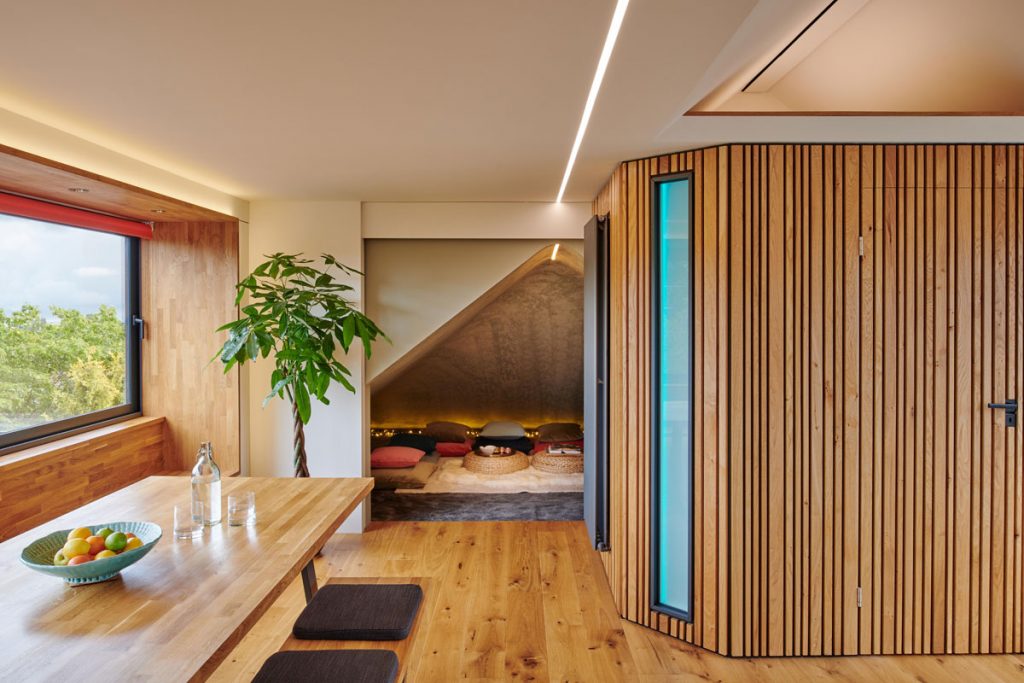Senanu Arkutu is the director of pan-African interiors company Daar Living. Here she shares the best ways to incorporate African elements into existing décor and tells us about the burgeoning interiors scene in her home city of Accra, Ghana.
Hi Senanu, tell us a bit about your interiors business…
Daar Living is a specialist interior design online store and styling service located in Osu, Accra. Our style is vibrant and fun, and also really Pan African because things come to us from all over the continent. I love our colonial furniture, which I refinish, and it sells in the online shop. Due to rising demand – including international enquiries – we recently pivoted from a physical shop to e-commerce.

What are the hallmarks of African interior design?
Because African interior design is yet to be defined by African designers themselves, I believe there is a lot of flexibility. Generally speaking, there is a bared back aesthetic. I like to think of African interior design as product or element-based so that I can essentially create any already known style I want – for example, Afro-minimalist or Afro-eclectic.


What are some simple ways to add African style to your home?
It’s easy to add African elements to any interior space. I believe you could put an African piece into anything, whether you’re incorporating it into modern styling or a more traditional look. The best place to start is accessories. For me, what really injects African character into the room would be textiles and basketry.
In West Africa, we all have a woven fabric, such as Kente and Baoulé, and these can be used for making cushions and throws, or in the upholstery of stools, chairs and sofas.
African interior design also leans heavily on natural elements and textures including raffia, straw and wood. Certain types of wooden elements are easily recognised such as our handwoven baskets and bowls, and these are a nice easy first step if you’re looking to inject African style into an existing space.

What are the trends you expect to see in 2021?
To some extent, we follow US trends, and given the pandemic era we are in, I sense that clean and minimalist style is becoming even more popular. It’s interesting that the colour Brave Ground was chosen as Colour of the Year by Dulux in the UK, and they’ve brought this out along with an earthy palette of shades. People in Ghana have been using the equivalent of Brave Ground for years, so trends-wise we are already there!
If people are following this colour trend in the UK or US they will find it easy to achieve an African aesthetic, especially through adding fabrics and textures. The traditional African colour palette is neutral/ natural and earthy, so the colour palette fits right in with our traditional and original interiors and most of our handmade handcrafted pieces that can be used for decor fit in beautifully.

What process do you follow when you work with clients?
Residential interior design is still relatively new here in Ghana. Unless it’s for a hotel or an office, or for a film or television set, the architect has typically handled the interior design. Hiring your own interior designer is just starting to become more common.
When I work with a new client, I begin by booking a one-hour consultation. What’s most important is that I discover how the clients want to feel when they are in that space. How do they want their visitors to feel in that space? We dig deeper and deeper, then I’ll propose a mood board, and I also give a list of stores to shop in Accra, as we work with people having wide-ranging budgets.

How important is natural and artificial light to your design concepts?
When it comes to lighting, there’s obviously a lot of natural light pouring into the room all day. We need to take full advantage of this light but balance this with the need to reduce heat indoors. Letting natural air come in to create that cross breeze is important too.
Artificial lighting is another thing that is done as part of the build, and homeowners might find that it’s too late to make significant changes to the lighting scheme once the build is complete. Sometimes the designer is called in far too late into the project, so for me, it’s a question of building awareness of how a designer can contribute to the look and feel of the home, and when to bring them into the project.
In my own home, and when I complete interiors projects for clients, I like to create a soft, warm, intimate feel. I always encourage my clients to use the city’s artisans, who refurbish old items into lampshades.
What I help them to create, through thoughtful design and one-off pieces from my shop and from local artisans, is something truly unique that delivers that visually interesting yet homely environment – a style that will make them feel really good about the space they’re living in.
Custom carpet and rug manufacturers TSAR Carpets worked in collaboration with Melbourne-based design firm GOLDEN on a residential luxury penthouse. This project consisted of installing approximately 30m2 of TSAR's award-winning Saltwater carpet in the living room of the Lake View Penthouse, a luxurious and sprawling lakeside penthouse built for a modern family.
With Lake View Penthouse, GOLDEN sought out to merge and reconfigure three existing apartments overlooking Melbourne’s Albert Park Lake into a modern and spacious penthouse befit for a young family. Located on the 17th floor of a high-rise building on St. Kilda Road, the penthouse is functional, spacious and features a selection of high-end art and furniture.
For the living room, GOLDEN’s aim was to incorporate warm and natural elements to provide its clients with a sensorial experience — and TSAR’s design-forward Saltwater carpet proved to be the perfect fit.


Featuring a playful and layered scene of sand, sky and deep-sea creatures and corals, TSAR’s Saltwater carpet is meticulously hand-tufted using different pile heights, beveling, carving and various material methods. The curious mindset of TSAR’s in-house senior designer, Teresa Cerebek, allowed the brand to explore a variety of construction techniques, producing amusing details.
GOLDEN’s designers first discovered Saltwater during TSAR’s Melbourne Design Week X-MATERIALITY installation and instantly fell in love with the carpet’s high concept design and unique textural variation.
Based upon GOLDEN’s brief, TSAR’s goal was to supply the client with a custom-dyed Saltwater carpet in a mustard-and-blue tone. The integration of this distinctive carpet in Lakeview Penthouse provides a soft and tactile feeling underfoot, while the custom colourway proves complementary to the project’s polished fixture and finishes.


“Lake View Penthouse was designed to reflect the client’s urban lifestyle by bringing in rich tones, texture and personality,” says Alicia McKimm, GOLDEN Director. “In collaboration with TSAR, we designed a rug for the large living room that tactfully exemplifies the essence of the home. TSAR was able to work with GOLDEN to ensure every last yarn could be customised to tie all aspects of its surroundings together.”
By balancing aesthetics, budget and performance, all TSAR designs can be adapted for large hospitality, commercial and small residential projects. TSAR maintains total control over every step of manufacturing within its own production campus—including the dyeing of yarns from 100% New Zealand wool — thus ensuring complete consistency throughout the entire production cycle.
“We are so pleased that both GOLDEN and their clients are extremely satisfied with the Saltwater carpet installation as a standout design factor in the Lakeview Penthouse,” says David Sharpely, TSAR Carpets CEO. “The lively beauty and playful motifs found within Saltwater — combined with the carpet’s material strength and durability — make it the ideal choice for a residence of this calibre.”
Now in its fifth year, SBID's international franchise in Ukraine recently announced the winners of its latest student design competition for young designers. The Get Me 2 the Top 2020/21 award ceremony took place in the capital city, Kyiv. The main goals of SBID's annual youth competitions are to provide talented interior design students with opportunities to showcase themselves and gain valuable tools to help them kickstart their careers in the design industry.
The event was opened by Peter Wickenden, the First Secretary, Energy Policy & Acting Country Director, Department of International Trade (DIT), British Embassy in Ukraine and Julia Danilova-Meretska, Regional Director of SBID Ukraine, who made the welcome speeches and congratulated the winners.
Julia Danilova-Meretska, Regional Director of SBID Ukraine said: “The competition is an opportunity for a young specialist to meet the industry in practice, to get a valuable piece of advice from the best professionals in the industry. We are proud that for the fifth year in a row we are making our contribution in identifying the talents, as well as providing young generation with an opportunity to make their dreams come true."
Among the guests of the Award Ceremony were the contest partners and jury members; Ruslana Bessarab, founder of St Sophia Homes; Helen Khilkova, CEO of DonStream Education Group and official representative of the University of The Arts London in Ukraine; Serhiy Makhno, architect, designer, ceramist and founder of the Sergey Makhno Architects studio; representatives of the Delavega furniture factory and D8 engineering, as well as architects and interior designers authorised by SBID.
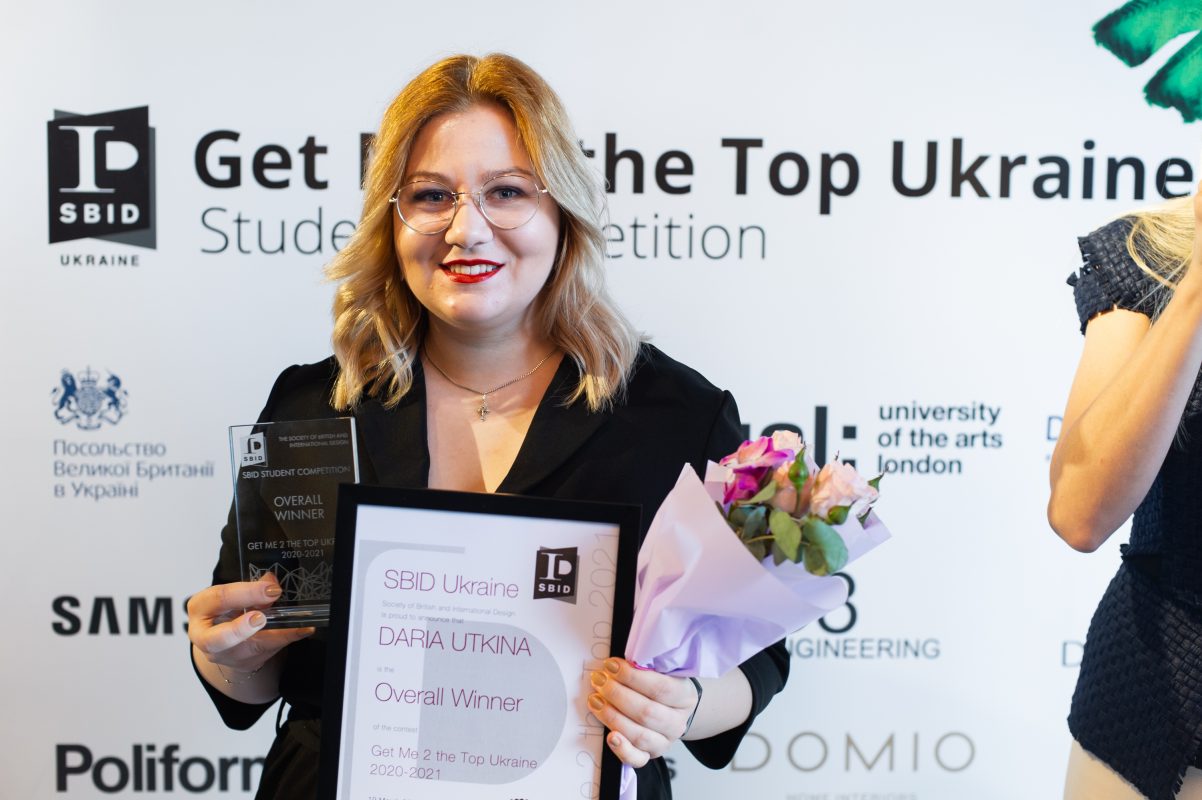
From the shortlisted students, the international jury selected winners in the following categories:
Private Space: Yulia Brazhnikova, Kyiv National University of Technology and Design
Public Space: Oleksandr Rekhlytsky, Kyiv National University of Construction and Architecture
Product Design: Oleksandra Morgun, Kharkiv State Academy of Design and Arts
Retail Design: Demidenko Anastasia, Mykhailo Boichuk Kyiv State Academy of Decorative and Applied Arts and Design
The overall winner this year became Daria Utkina, a graduate of the Salvador Dali Academy of Contemporary Art who will receive a six-month paid internship at the British architectural firm Jestico + Whiles, including costs of flights and accommodation in London, and Visa support.
Other prizes for the winners feature a trip to the Poliform LAB in Italy; gifts from Delavega furniture factory, D8 Engineering and Silpo supermarket chain; the Serif TV from Samsung Electronics TV; internship at St.Sophia Homes development holding; an annual subscription to ELLE Decoration Ukraine magazine; reproductions of works by famous contemporary Ukrainian artist Roman Minin from Abramovych.art; the training course "Marketing in Construction and Architecture" from the School of Construction Project Management PRO PM Construction, as well as a course from the University of the Arts in London (UAL) and DonStream education group.
In addition, two competition finalists - Alina Chen, KhDADM, and Olena Grechko, Lviv Polytechnic National University - were also invited for an internship at the Sergey Makhno Architects studio.
More detailed information about the competition, the international jury members and the works of this year's winners can be found on the SBID Ukraine website: www.sbid.org.ua/getme2thetop
The green oak building tradition of the Hogg family forms the inspiration behind Rachel McLane's crafted designs in the new 40-bedroom Sandburn Hall Hotel in the Yorkshire countryside.
Design-led and built to a country-style specification, the 1,000-acre Sandburn Hall estate was developed by the late Mike Hogg seven miles from York. The new adjoining hotel complements what is already one of North Yorkshire’s leading golf, wedding, events and business venues.
When Pickering-based Rachel McLane was contracted in 2018 to provide her innovative, specialist interior design work for the ambitious new build it was immediately clear that the Hogg family wanted to build on Mike Hogg's legacy.
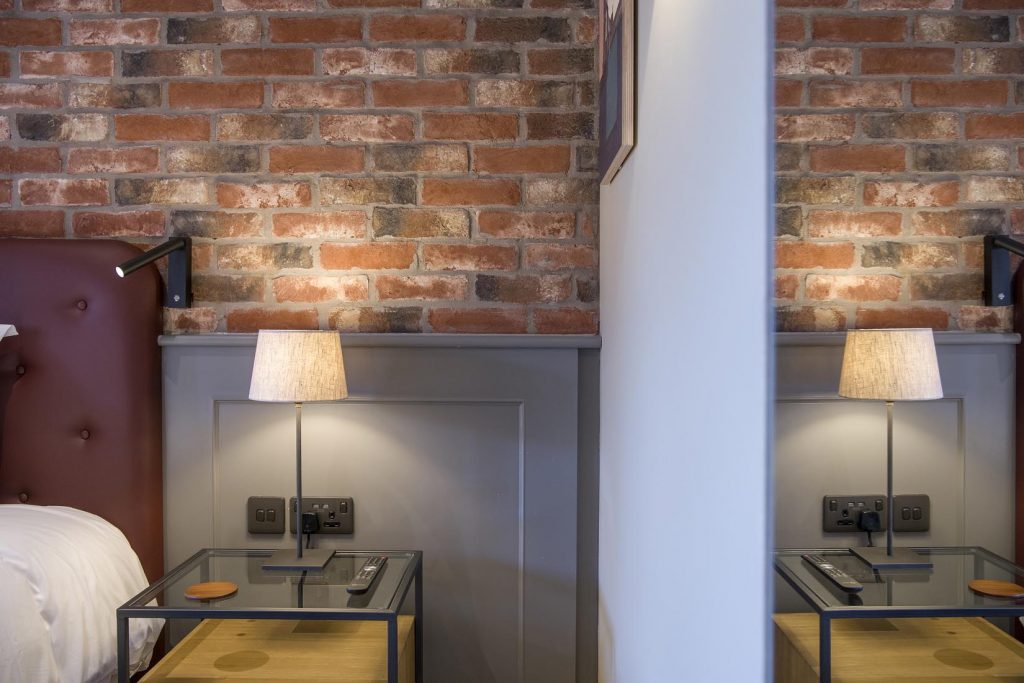
"From day one we worked very closely with the client to incorporate the Hogg family firm's wonderful custom building heritage into the design, bringing that history, the shape, feel and emotion of that green oak frame building structure to the fore," said Rachel.
"Given the freedom to interpret their brief we have created a design that not only makes the most of the space and enhances the building, but understands and incorporates the Hogg family heritage, interests, and craftsmanship into the final design."
The new hotel's centrepiece uses natural green oak beams to frame a triple-height lobby as part of Sandburn Hall Golf Club, Grand Function Room and Tykes restaurant. Hand picked artwork is established on the walls, including photos of green oak frames and black and white prints going around the corridors and rooms. The designs also take some of their inspiration from the local area where York and the East Coast are evident in the natural colours, earthy tones, and real materials including vintage maps depicting the Sandburn Estate.
"In doing so, we were able to fulfil an important part of the brief that the rooms and spaces had to feel individual and not corporate," added Rachel.
Rachel's design vision created a unique cohesive feel across all rooms and into the common areas ensuring that the Hogg family connections to nature and craftsman trades were reflected in the room décor. Rachel commented: "The designs merge the traditional and the contemporary and aim to achieve a balance that bridges the core golf, wedding and business customer base."
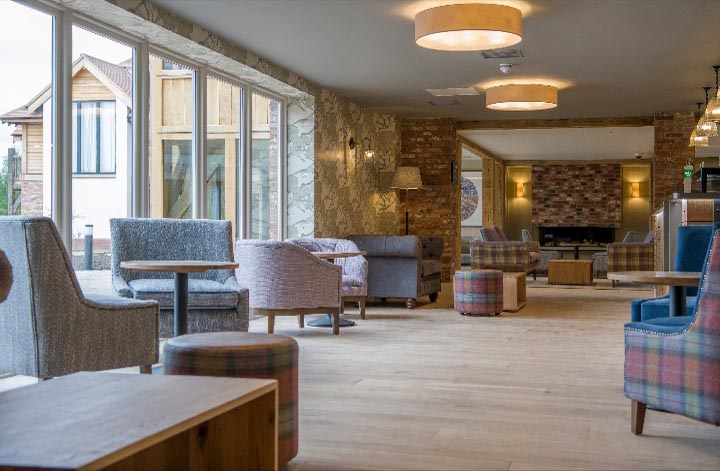
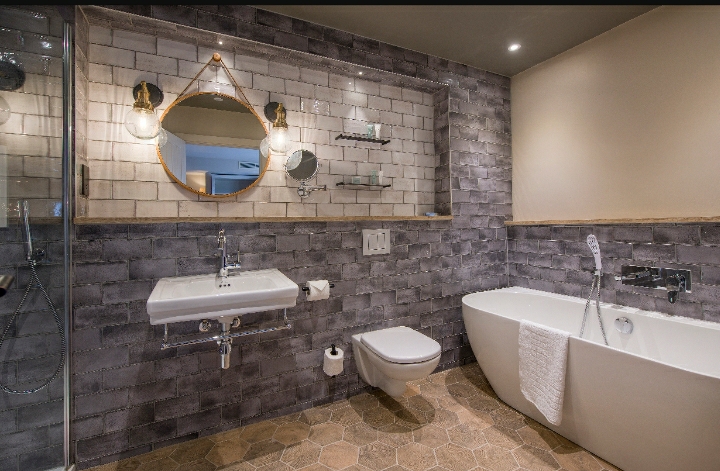
The Rachel McLane team's design expertise is evident throughout the new hotel's range of 40 double and twin rooms all with dressing areas, including larger family, luxury and accessible rooms, and two luxury suites. They also all come with handcrafted built-in case goods. "We wanted the signature and family rooms to be fun, a bit urban and industrial where the raw richness of exposed brickwork and soft leather combine with cool-toned sawn grey oak flooring and built-in bespoke joinery."
Well lit, spacious and airy with eclectic pieces of furniture that differentiate between room types, the large windows of these signature and family rooms are of a natural oatmeal palette, soft grey and brick in a modern, fresh design that naturally marry the hand-crafted structure of the building.
Super-king beds and luxury, made in Yorkshire Harrison Spinks mattresses are a feature, and bathrooms are a mix of contemporary and traditional with the emphasis being on quality and timeless design. The hotel's premier rooms, including the courtyard premier, have been designed with a feel that is classic and calm with raw, untreated materials to give a fresh, bright, light and airy atmosphere. Reclaimed bricks are softened by natural cream and teal curtain fabrics with artisan hand-blocked characteristics. Elements of teal and natural weave have been picked up in soft woven tweeds and the carpet's muted tones, and the furniture has a comfortable country feel in a calm palette.
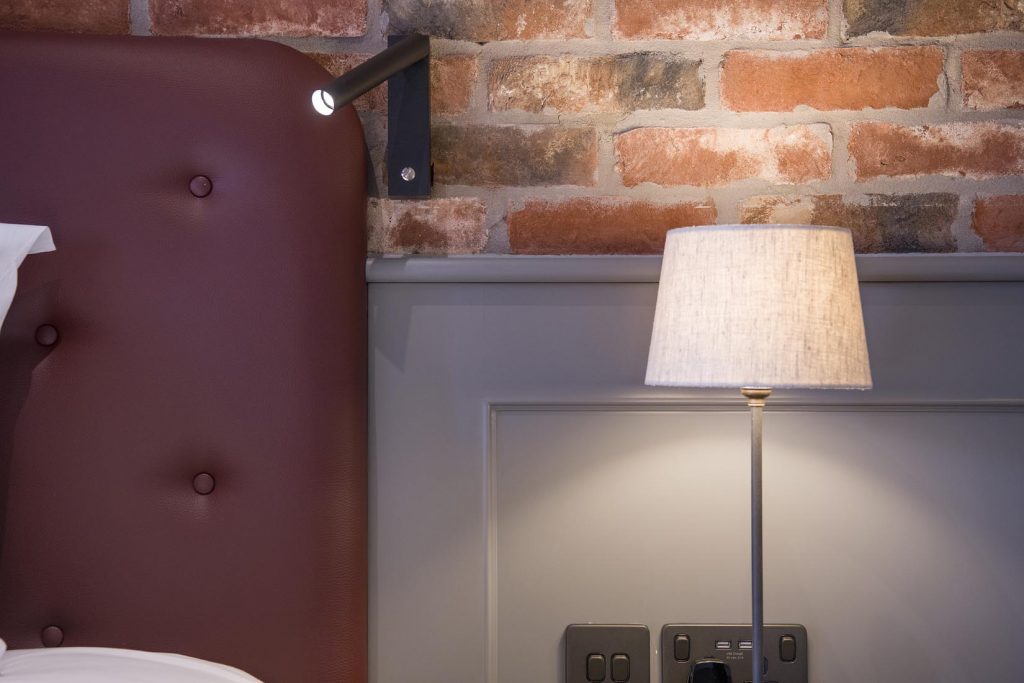
"The biggest challenge was the length of time it took from creating the fixtures and fittings specification to fulfiling the initial design with Covid-19 a constant hindrance. We found that not only were some products unavailable, but more than one company had ceased trading."
Despite the challenges of a long project Rachel says that the team has loved working on Sandburn Hall Hotel: "The client is a pleasure to work for, they appreciate high-quality workmanship, attention to detail, and above all understand the value of design and the difference having a designer on board makes to a project.
"It's also lovely being local to a project as you feel like you are contributing towards the good of the local area."
About the Author
Rachel McLane developed a wealth of experience designing for the retail sector for eight years in London and York before setting up her practice, Rachel McLane Ltd specialising in the design of interiors for professional clients with commercial interests.
If you'd like to become SBID Accredited, click here to find out more.
With growing demand for zero contact bathroom solutions, manufacturers are increasingly introducing new developments for innovative touchless products to deliver the ultimate in hygiene. From basin mixers that activate automatically when they detect a user, to electronic flush plates with movement sensors, and mirrors with lights that are switched on with a simple gesture – Roca offers a range of touchless solutions which provide an extra layer of hygiene and safety within the bathroom. Infrared sensors allow users to activate water flow in taps, flush the WC or control mirror lights without the need for contact, avoiding the spread of viruses and growth of bacteria.
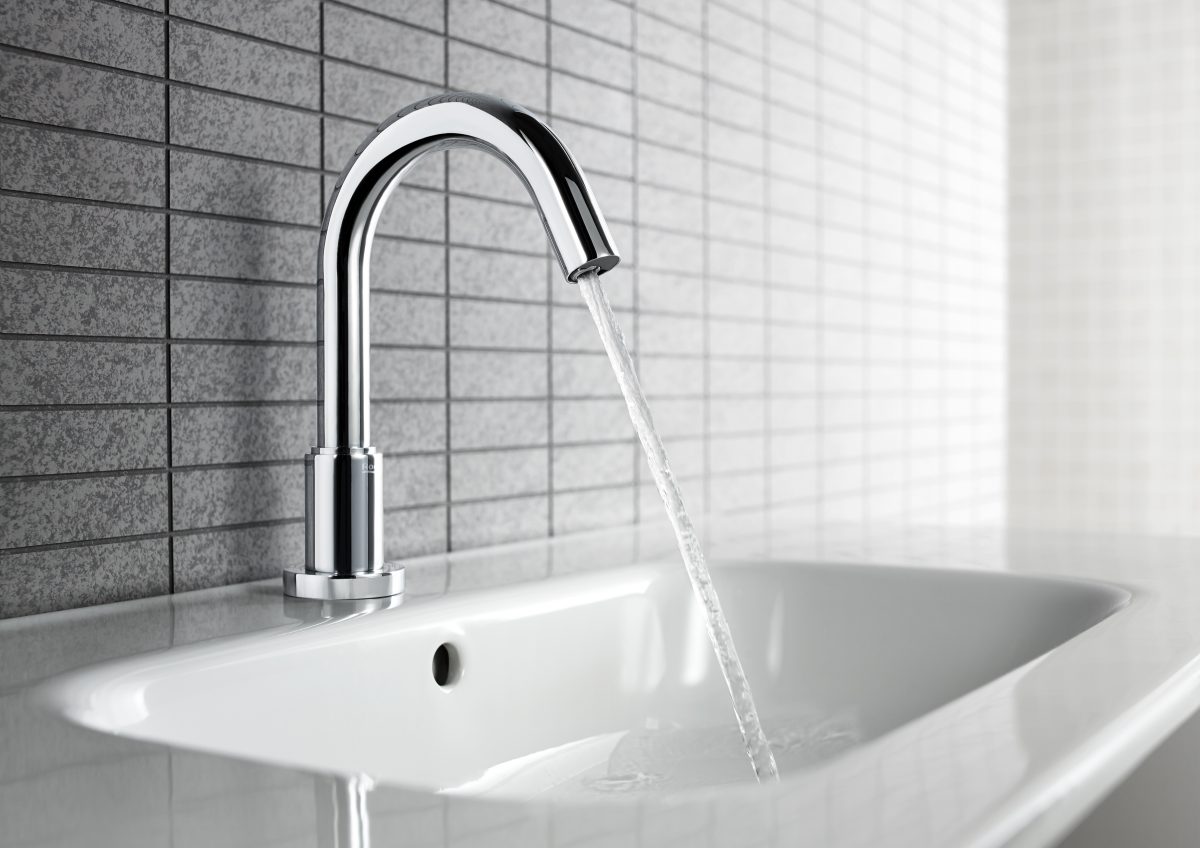
Electronic Basin Mixers
Roca’s range of electronic basin mixers, including the Loft-E range, feature an infrared sensor which activates the water flow when presence is detected and shuts off automatically when presence is no longer detected, avoiding direct hand contact. The lack of contact with the tap improves hygiene and prevents the build-up of droplets and fingerprints on its surface, resulting in a cleaner product for longer. Roca’s electronic basin mixers offer a highly hygienic and effective solution to fight the spread of viruses and bacteria and to reduce the use of water in the home.
Easy installation is guaranteed. The electronic mixers are available in a battery or mains operated system which means they can be installed in any bathroom, regardless of the availability of a power outlet in the area of usage. The battery operated versions are exceptionally durable with alkaline batteries which guarantee over 250,000 uses. A further innovation means both greater safety and more savings - the electronic device stops the water flow after a preset usage time to promote moderate use and prevent unnecessary waste of water.
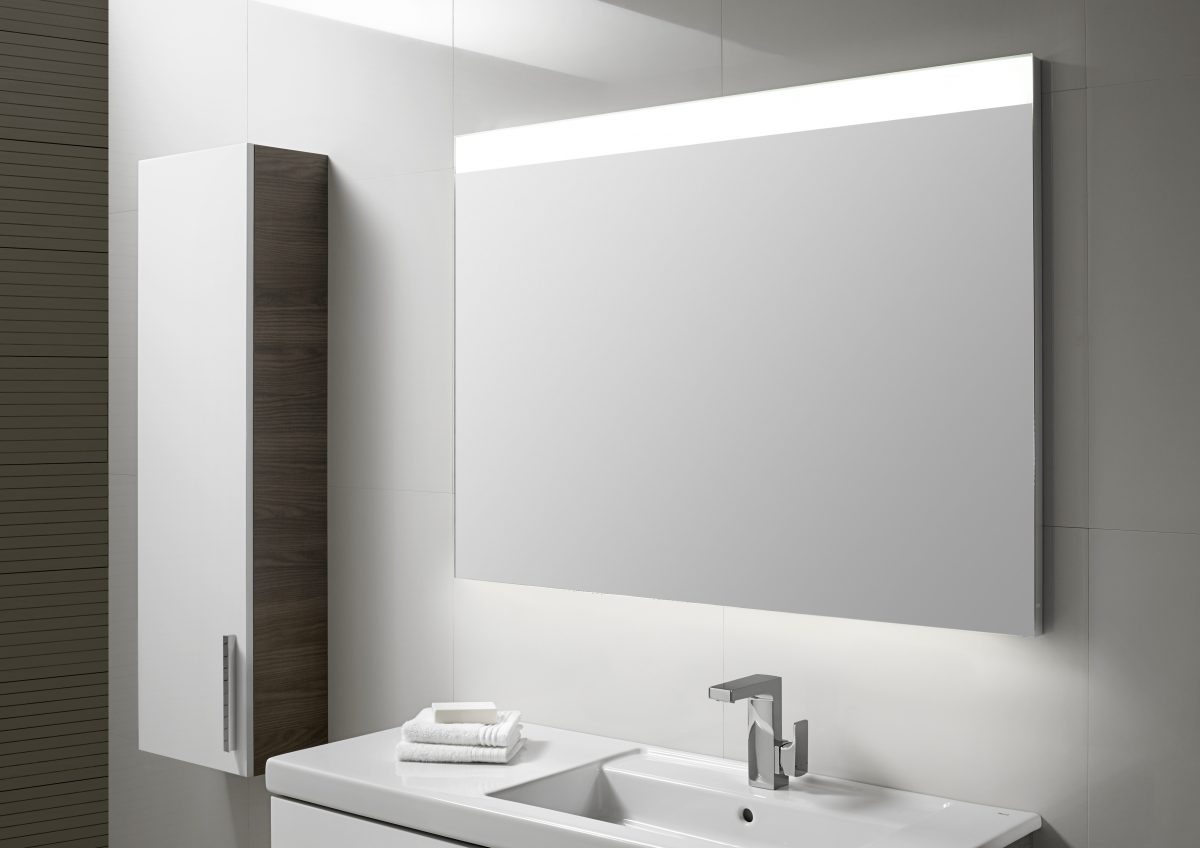
Touchless mirrors with LED lights
Mirrors with integrated touchless technology, such as the Prisma Comfort model, allow users to activate functions such as the ambient light or the demister device through movement, which means less direct contact from hands, allowing the glass to remain clean and clear.
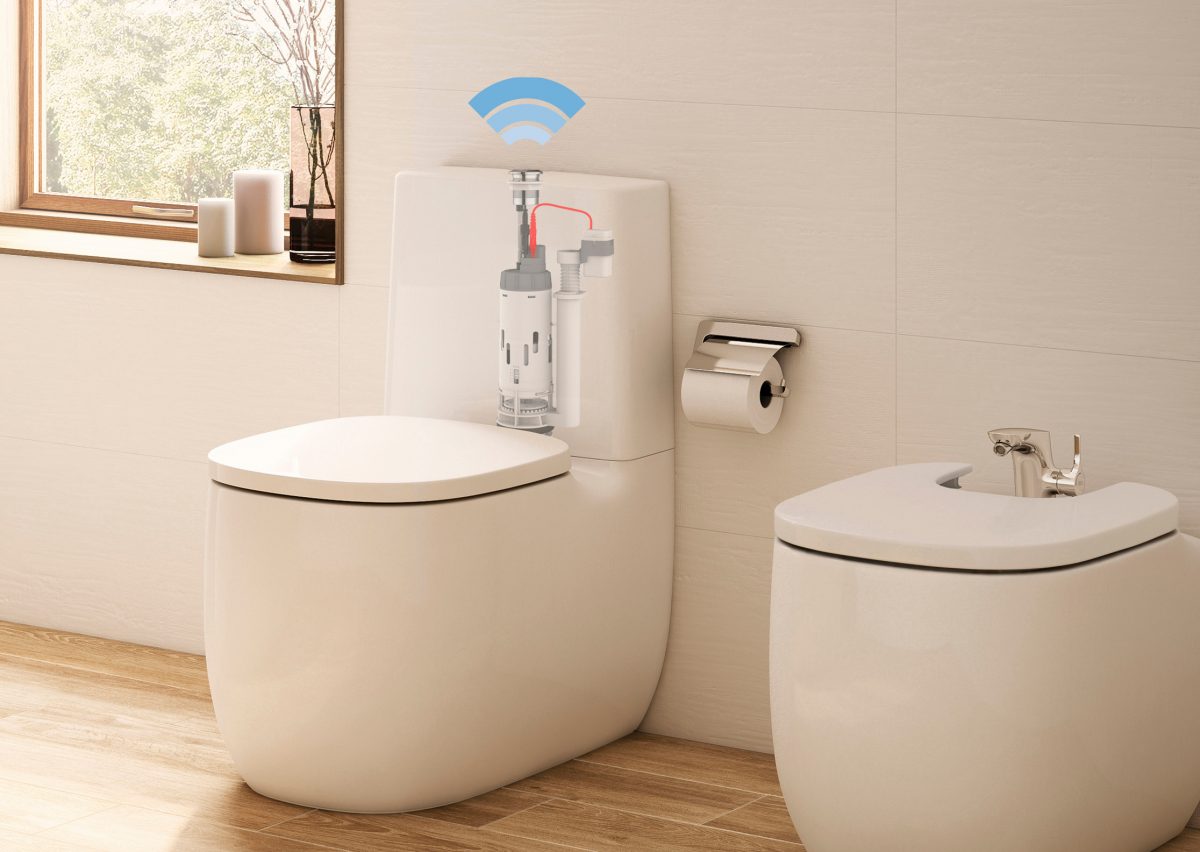
Electronic operating plates for toilets
The EP-1 and EP-2 electronic operating plates make it possible to activate the toilet flush without touching it. With a stylish, contemporary design and very easy installation, they are automatically activated when moving a hand in front of them, ensuring maximum hygiene and avoiding any contact.
With a backlit surface divided into two stripes which are alternatively activated depending on the type of flush (partial or full), they can be set off by simply bringing the hand closer or by choosing the automatic option in which the toilet is instantly cleaned when the user approaches or when a specific time has passed after its use.
Roca’s Touchless solutions are suitable for both domestic and commercial use, providing an extra layer of safety within every type of bathroom.
About Roca
Roca began in 1917 as a manufacturer of cast iron radiators at its factory in Gavà, near Barcelona. From humble origins, the company has grown into a global business driven by a firm focus on improving the quality of life for its customers. Roca began producing innovate new designs, products and materials to provide the complete bathroom solutio. Today, Roca manufactures at 78 facilities around the world and is active in over 170 markets.
If you'd like to become SBID Accredited, click here to find out more.
In a particularly turbulent world (enduring an ongoing pandemic) where there is so much uncertainty, striving for wellbeing in our daily lives is all the more important. Our homes now act as a substitute for offices, gyms, entertainment centres and sanctuaries to name but a few of their additional uses. As we’re spending significantly greater time in them overall, it is clear they need to work harder than ever to meet our demands, suit our needs and ease our minds. The question is - can biophilic design really help? Peter Oudejans, director of leading biophilic design studio, Oudejans Interiors shares key insights on the benefits of integrating concepts of biophilia into our interior environments.
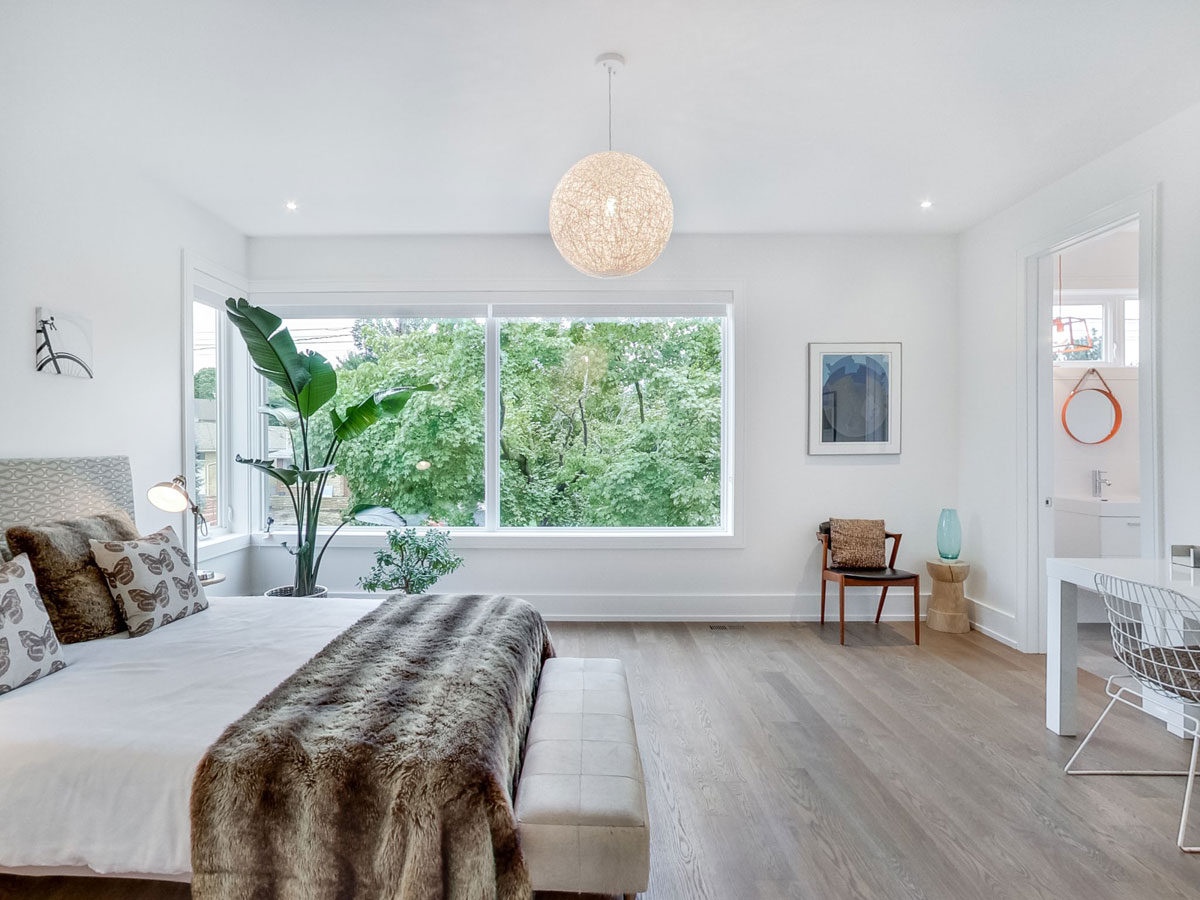
Biophilia Explained
Biophilia, simply stated, is the human connection to nature that assists us in attaining wellness in our lives. Have you ever noticed how calm and uplifted you can feel when walking in the woods, strolling along the beach or simply sitting in a park? That’s the ‘Biophilia’ effect. In rural settings, this connection can be more obvious, but as more of us live in densely populated, urban environments, this connection is slowly being lost. That does not mean however, that we are unable to embrace nature’s beauty at home. There are numerous ways to live more meaningful, holistic lives and in practice this is about re-establishing links with nature to create healthy environments for life and work.
“It is the simple core truth that humans need a connection to nature to be content”, according to Sally Coulthard, author of the book Biophilia. It is the notion that humans need to feel connected to their natural environment not only to survive, but also to thrive.
Benefits of Biophilia
Research undertaken over the past few decades has shown that biophilic design can improve cognitive function, physical health, and psychological well-being with benefits that include:
- Improve memory and concentration
- Reduce anxiety and depression
- Lessen stress levels
- Lower heart rate and blood pressure
- Enhance sleep patterns
- Calm the mind and boost contentment
According to architect Claudia Bonollo of Monamour Natural Design, “our mood and our capacity for communication are influenced by a combination of physical, mental and sensory factors. Therefore, an environment that involves all the senses makes us happier and more receptive,” she says.
Oliver Heath Design, has found that the inclusion of Biophilia to the design process can increase productivity by 8% and rates of wellbeing by up to 13% in an office environment. In healthcare settings, pain medication was shown to be reduced by 22% and in the education setting, rates of learning can be increased by 20-25% where biophilic designs have been incorporated.
And finally, Florence Nightingale, the founder of modern nursing weighs in with “I shall never forget the rapture of fever patients over a bunch of bright-coloured flowers… People say the effect is only on the mind. It is no such thing. The effect is on the body too.”
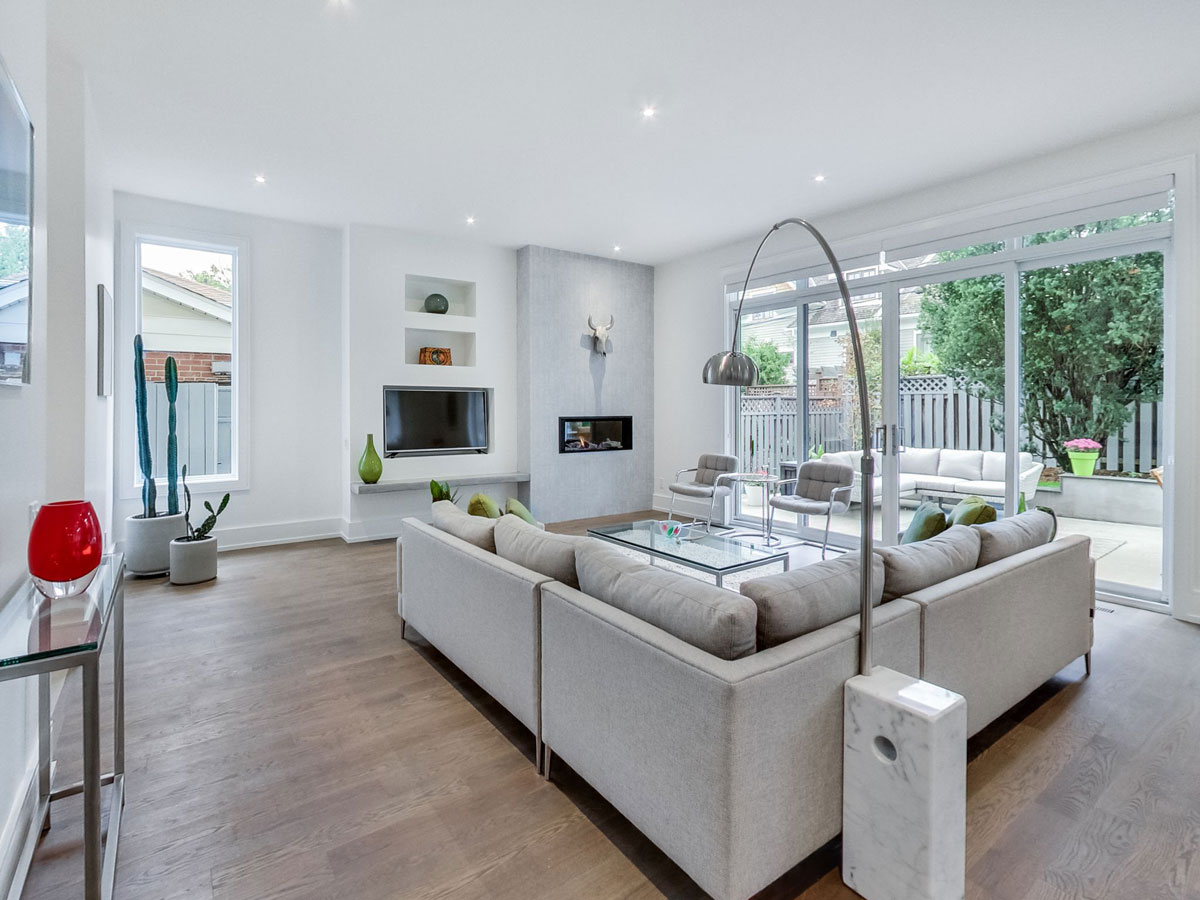
Biophilia in Interior Design
With regard to interior design, Biophilia is considered more of a lifestyle than a design trend. It can be applied across the entire spectrum of interior styles from contemporary to classic and has a place in all areas of interior design, be it in a residential or commercial setting. Eco design and green architecture are very closely related concepts with a focus on environmentally-friendly design practices that are good for people and planet, just as Biophilia is focused on the wellbeing of humans through their connection to the natural world.
Biophilic design has three key threads that together make a space biophilic:
1. Being in a space that has a direct, physical contact with nature;
2. Being in a space that reminds you of nature through the use of natural items;
3. Being in a space that connects to natural rhythms and outside spaces.
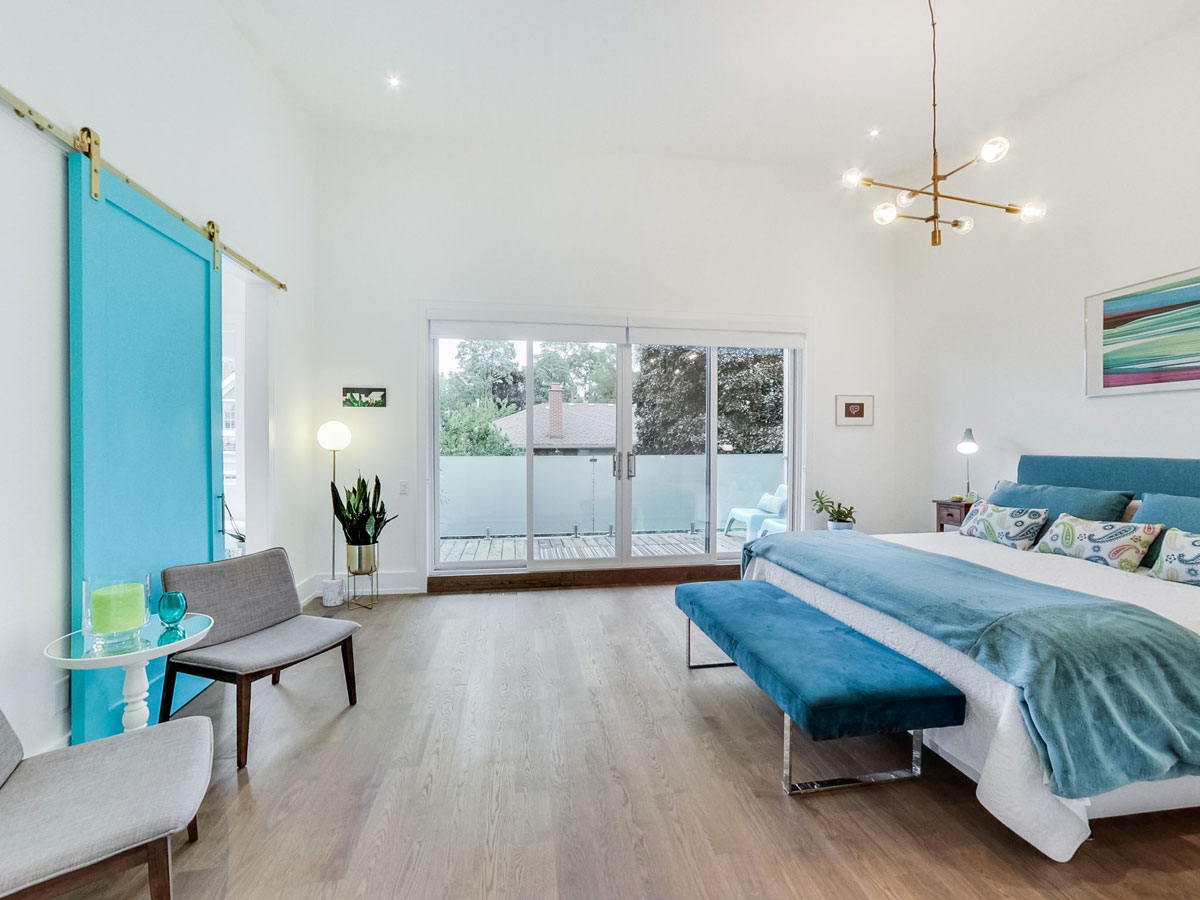
Key Elements of Biophilic Design
There are numerous key elements of biophilic design which include incorporating a few or all of the following:
- Flora and fauna – enhancing spaces with carefully selected vegetation to create a natural aesthetic and aid air purification;
- Natural effects – embracing natural patterns, textures, colours and materials, evoking nature to bring the outdoors in;
- Light – integrating natural light to deliver more vibrant and luminous interiors in tune with day and night cycles;
- Air – improving ventilation for a healthier home with well-designed airflow;
- Space – creating spaces that offer both a sense of perspective of outside and a cocooning refuge inside.
Take the example of firelight and candle light, which have slowly decreased in domestic settings as the use of heating (central and otherwise) and of course, electric light, now almost completely dominate in the modern home. Yet the ‘red’ light that emanates from firelight and candlelight plays an important trigger in the body’s preparation for rest and relaxation, making us feel calm and cosy.
In a study by the anthropologist Christopher Lynn, he measured people’s blood pressure and how sociable they felt after watching a log fire on a screen. One group watched with sound, the others no sound. The results found that those that watched with no sound showed little benefit, but those that experienced the audio and visual effects of the fire, had significantly reduced blood pressure, felt more mindful and focused on the present and were increasingly communicative and sociable. [1]
Including such a simple yet multi-sensory element such as a fireplace within the home can make a significant difference to the wellbeing of the individual. Just imagine the other benefits and sensations a real fire provides, such as the soothing radiant heat and comforting wood scent. And this is just one simple addition in the whole armament that nature and Biophilia can provide.
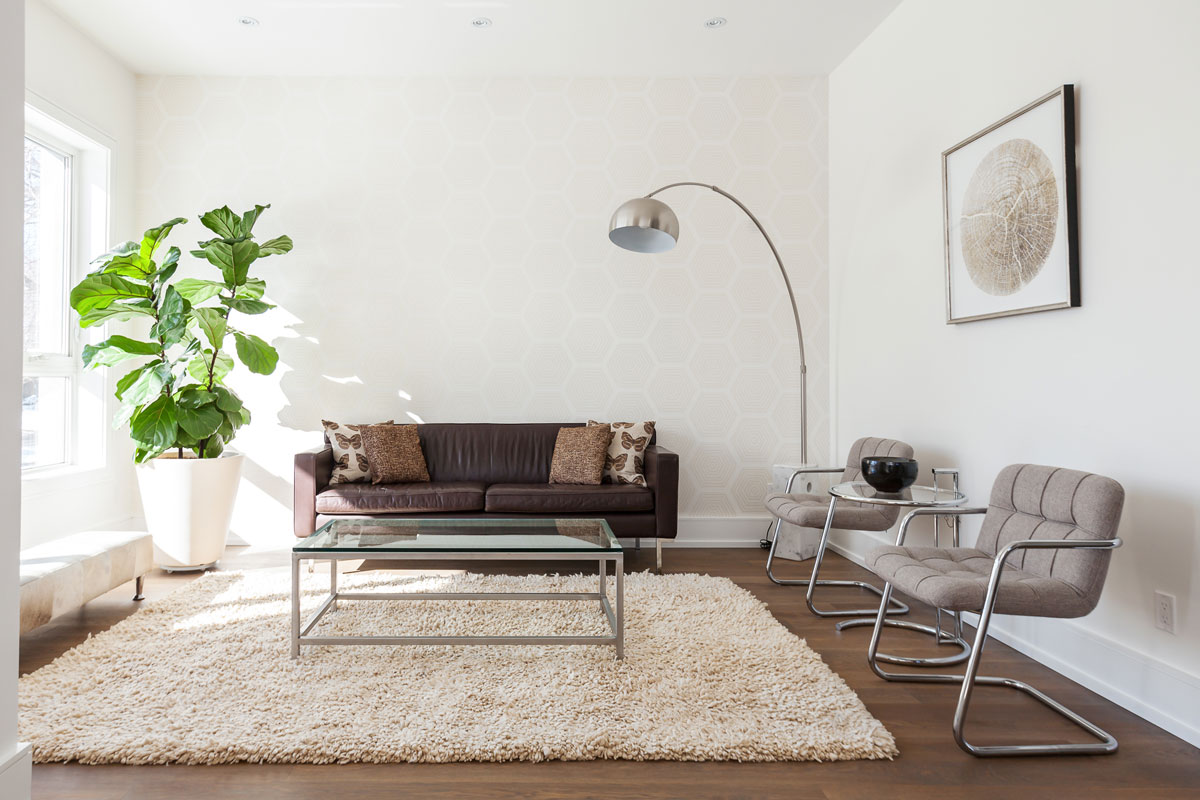
A Biophilic Future?
Biophilia is still deemed to be in its infancy within the interior design profession, despite being based on one of the most fundamental connections humans have with their environment. But with the current focus very much on the recovery, both physically and mentally, from a global pandemic, never has there been a better time or more crucial need to draw upon the healing powers of nature to improve our wellbeing.
Interior designer's approaches to home design should now be looking to design sustainably with nature at its core for the creation healthy, happy homes that are better for people and the planet. After all, it truly is all about creating nature-inspired spaces to support our health and wellbeing.
References:
[1] Lynn C.D. The Psychophysiology of Fireside Relaxation. American Journal of Human Biology 25 (2013). 265-265
Projects photographed are undertaken by Oudejans Interiors Ltd. All photos are credited to photographer Glenn MacKay.
About
As a leading biophilic design studio, Oudejans Interiors feels it is vital to live more sustainably, in an increasingly connected manner to the natural world. Their motivation for designing spaces is to consciously straddle the line between nature and interior architecture. From creating a living wall to redecorating with natural hues, incorporating biophilia into living spaces is an effective way to restoratively transform them, whilst boosting body and mind.
If you'd like to become SBID Accredited, click here to find out more.
Project of the Week
This week's instalment of the #SBIDinspire interior design series features a residential design by 2020 SBID Awards Finalist, Knox Design. This villa was an investment project built in Mallorca to be sold as a second home. As this property was for sale, the aim was to create enough interest to make a lasting impression in the potential buyer’s mind, while still leaving enough space for them to mentally move in themselves.
SBID Awards Category: Residential Budget Up To £50k Sponsored by Sans Souci
Practise: Knox Design
Project: Villa Sol De Mallorca
Location: Mallorca, Spain
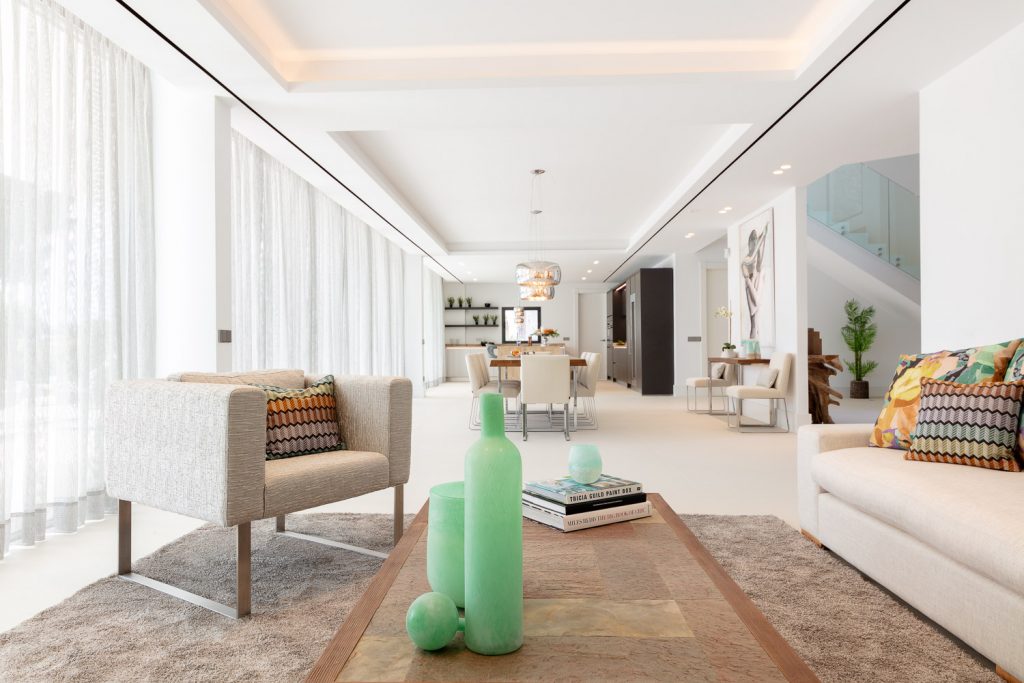
What was the client's brief?
The brief was to create a holiday home for grown-up families with an air of luxury as opposed to the typical, seaside blue and white themes often seen here.
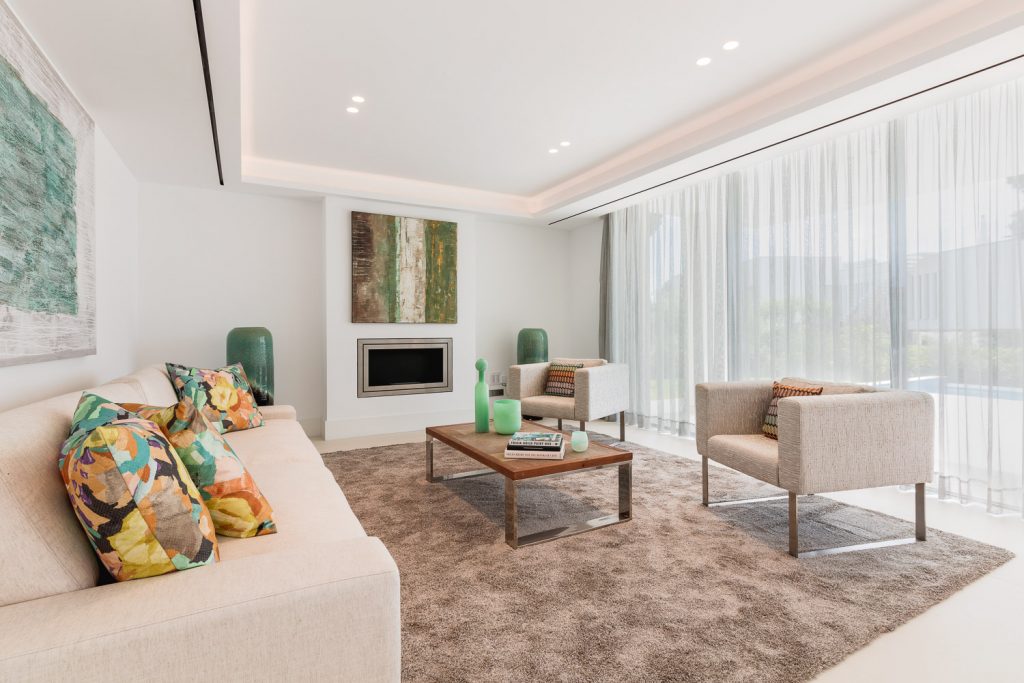
What inspired the design of the project?
The living area stretched along the full-frontal section of the villa, calling for the definition of spaces and the creation of a sense of flow between them all. Once I defined the purpose of each of the living areas, I selected soft caramel and sandstone hues as a running theme to join them with each other, reflected in the use of marble, oak and artwork in these tones.
Sprinkles of mint, fuchsia and emerald were present in strategically placed soft furnishings and decorative items, all set against a sumptuous wallpaper in the stairwell, silky rugs, stunning overhead lamps and evocative artwork. I chose Rounded shapes in décor items and furniture to counterbalance the sharp geometry of the architecture. The overall effect is one of luxury elegance and comfort, space and luminosity.
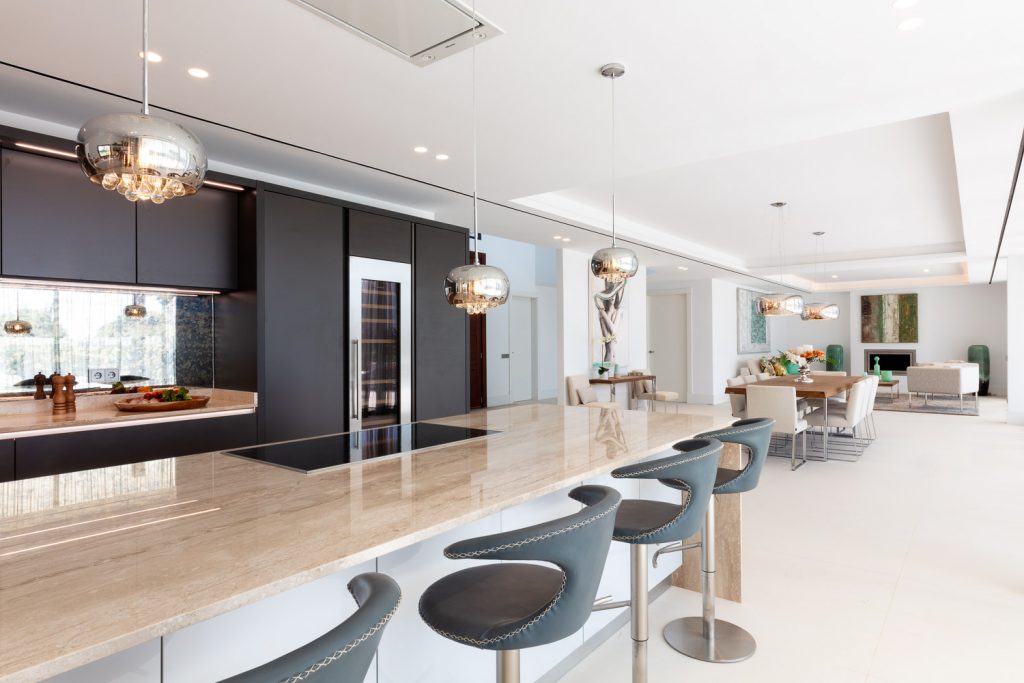
What was the toughest hurdle your team overcame during the project?
As in a lot of open plan living spaces, there was no entrance hall, so to speak, and the dining area felt exposed and cold. To solve this issue I asked for a partition wall to be added between the entrance lobby and the dining space in order to add intimacy to the dining area and provide a focal point opposite the front door.
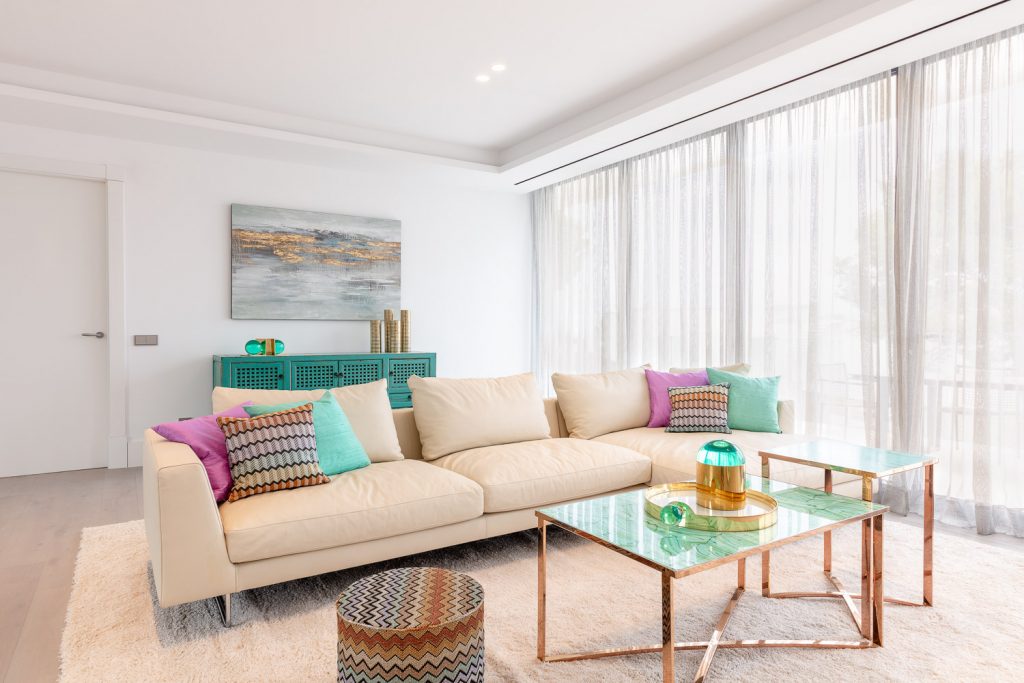
What was your team’s highlight of the project?
The highlight is always installation day when all the visions come to reality and the house gains its soul.
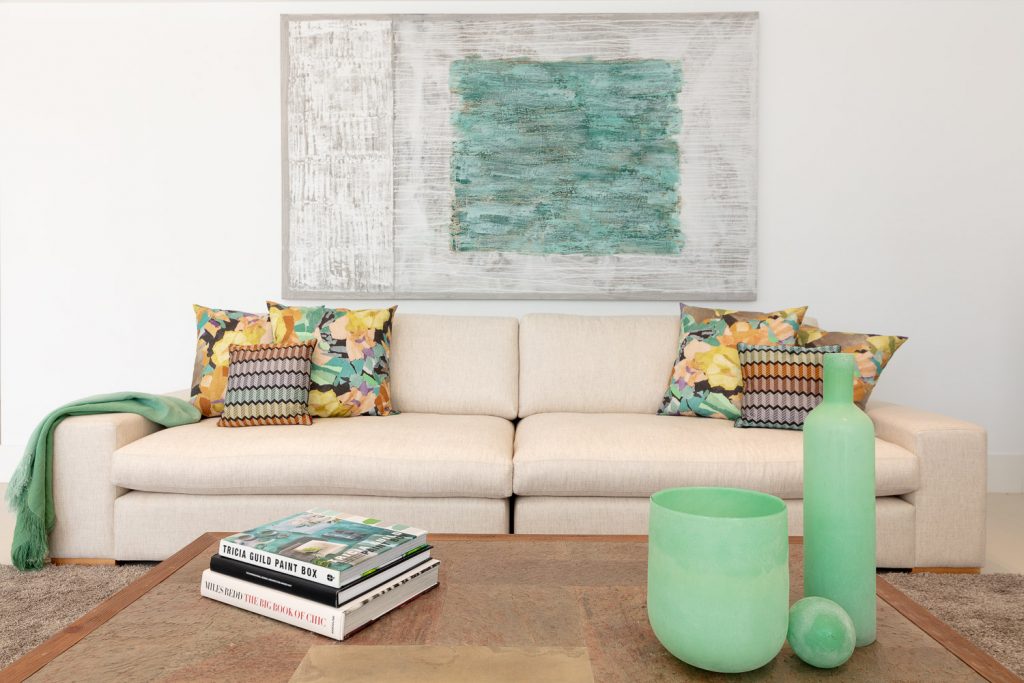
Why did you enter the SBID Awards?
I entered the SBID awards for the first time in 2020, having been a recognised design professional for several years as although I am based in Mallorca Spain, the majority of my clients are British second homeowners.
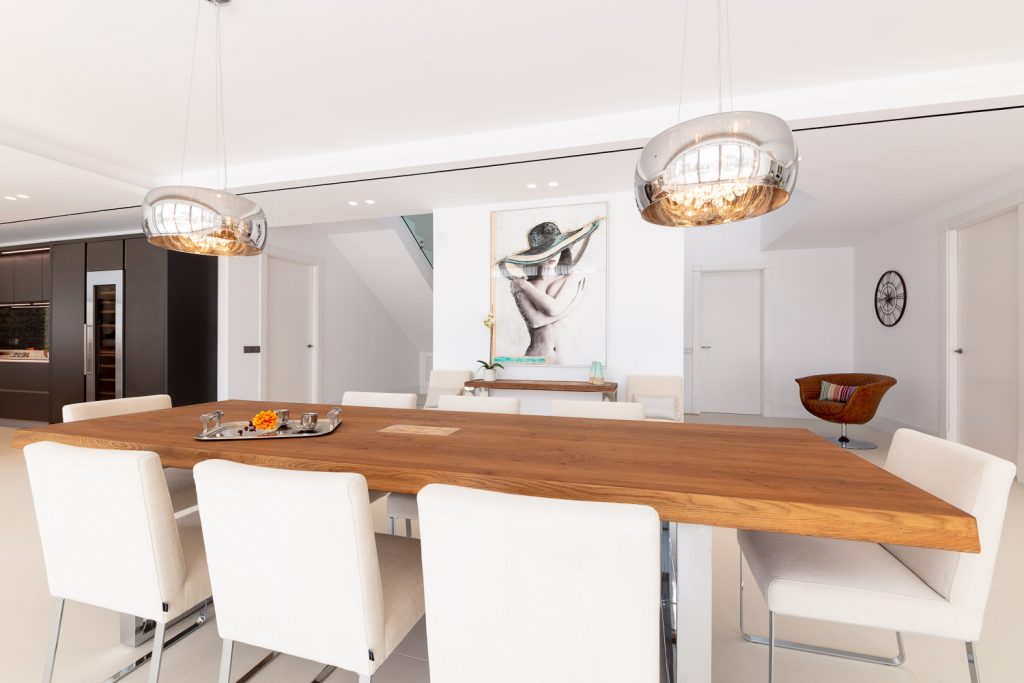
Nestled deep in the heart of the English countryside, Avalon at Broughton Hall is part of The Broughton Sanctuary in the foothills of the Yorkshire Dales National Park. The luxurious wellbeing retreat centre required a calming and harmonious aesthetic with sumptuous sound systems to play a key role in the Art of Being and relaxation.
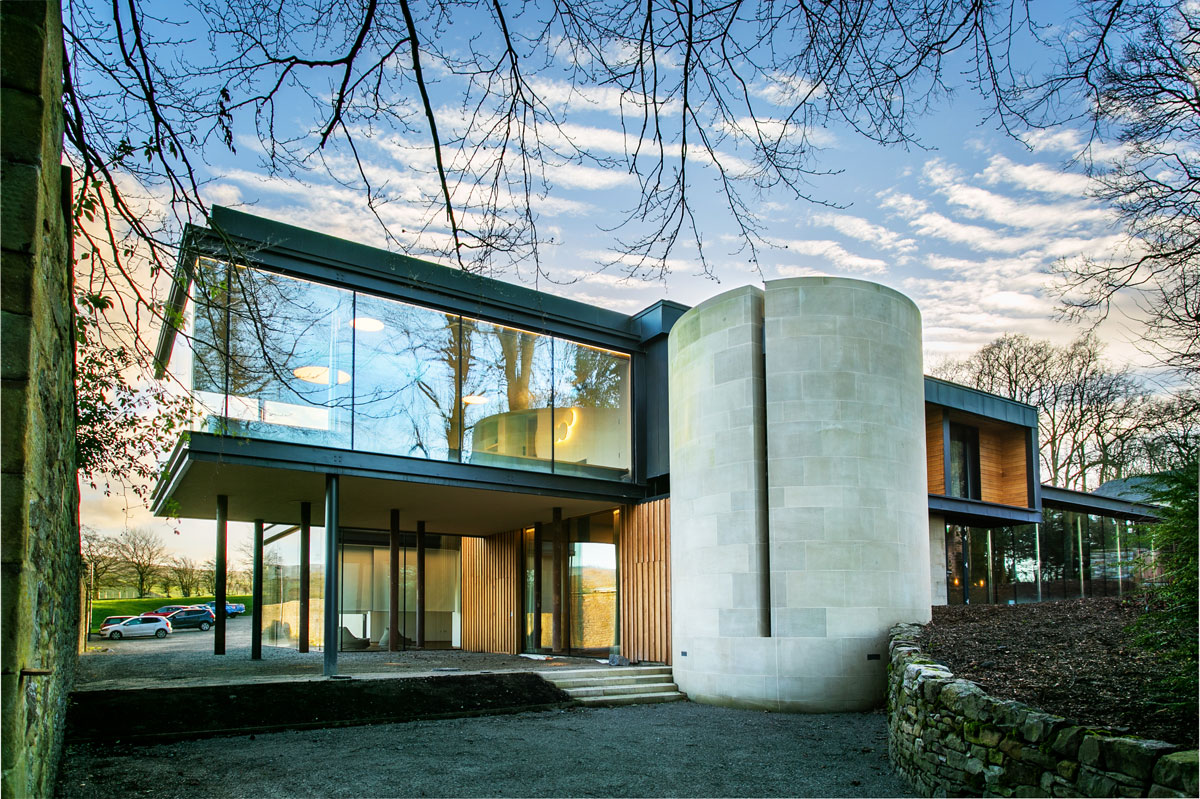
Avalon, amidst the stunning 3000 acre Broughton Hall Estate in Yorkshire, is a retreat like no other. This special location was designed to serve the mind, body and spirit, creating the freedom for personal development and the pursuit of the inner voyage. This unique building was designed by Cirencester-based architects, Yiangou, with the interior design created by celebrated Opera and Ballet designer, Patrick Kinmonth.
The importance of the building and the way it helps people connect with it and each other during their journey cannot be underestimated. As a result, Patrick Kinmonth stage managed a deluxe and inventive interior for ultimate connectivity and wellness in mind. It is discreet, joyful and functional, combining natural materials, contemporary style and technology in a thoughtful and contextual way.
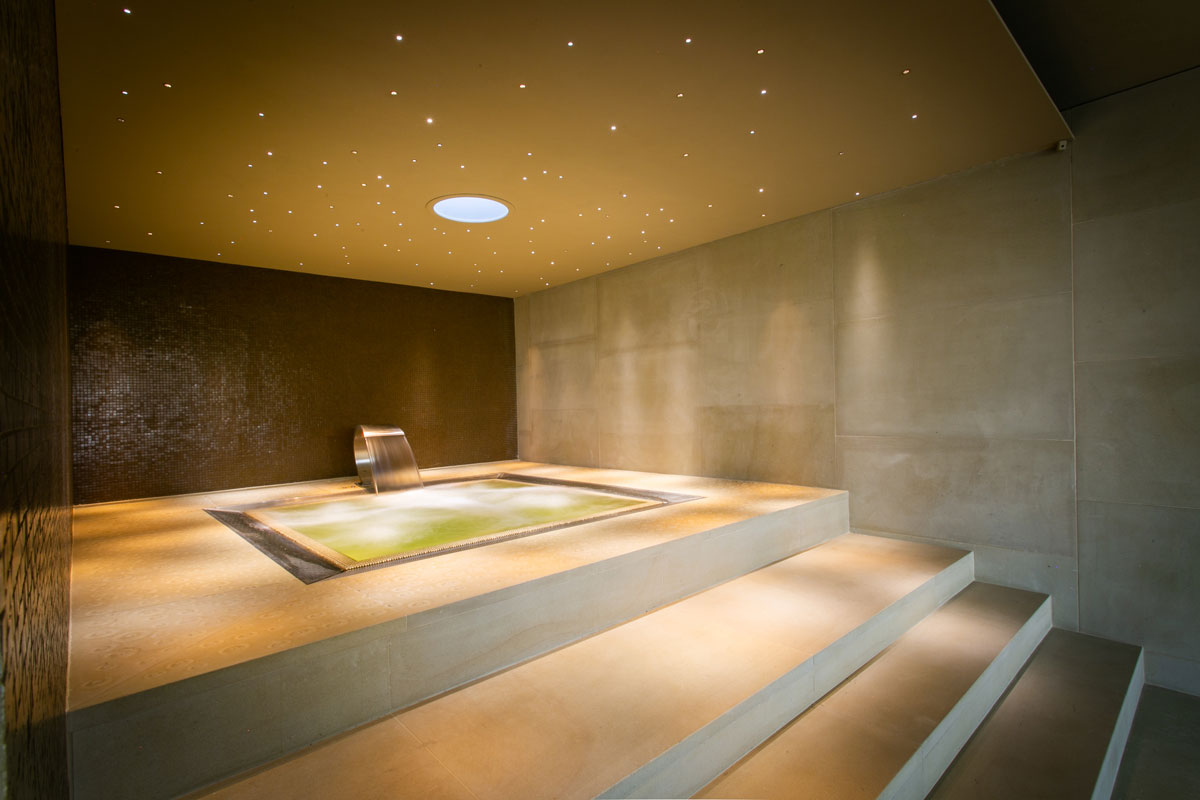
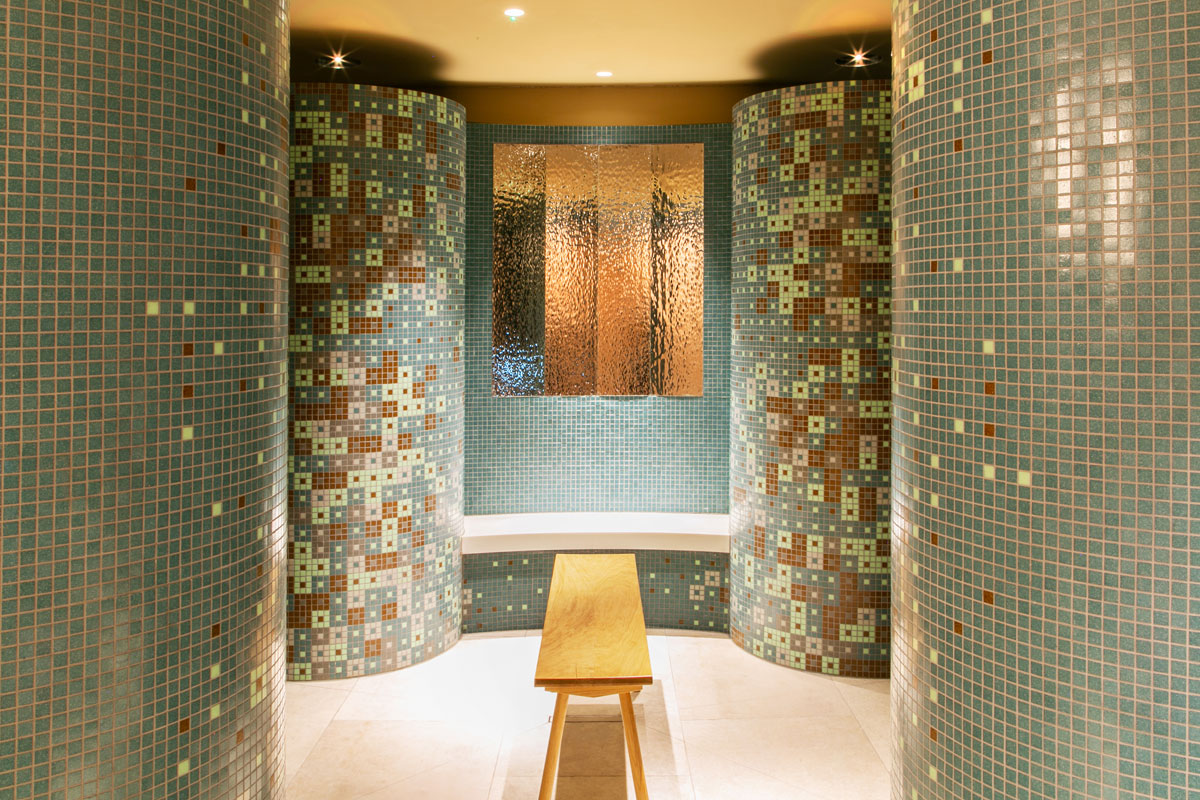
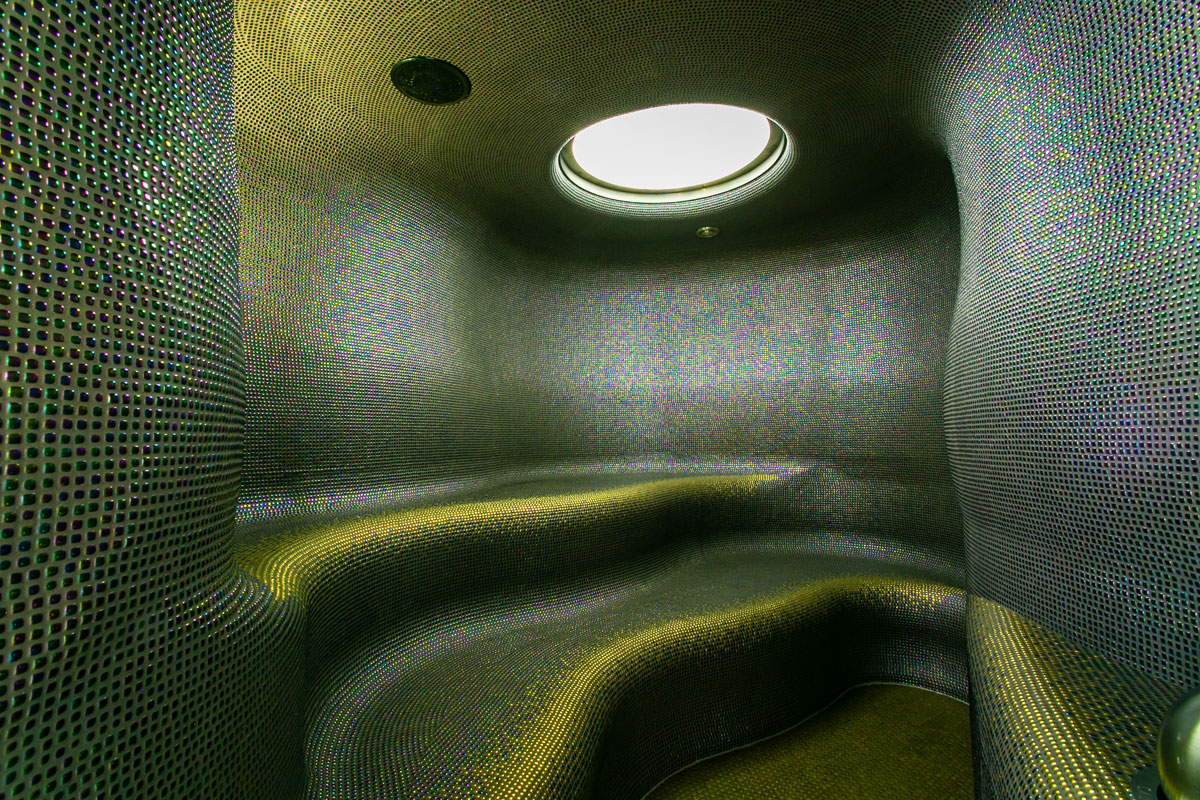
Sound systems designed to be discreet
Sound is a key sense in the Art of Being. Kinmonth understands this well and with the invisibility of the buildings' technology being an integral part of the specification for Avalon, Patrick chose to deploy Amina invisible speakers throughout. Invisibility is, of course, key in keeping the interior space visually free and uncluttered. After all, a sanctuary is not a sanctuary when you are surrounded by technology. Amina was the logical step to ensure the audio solution fitted with the design concept and did not distract from the visual journey and intention of the spaces.
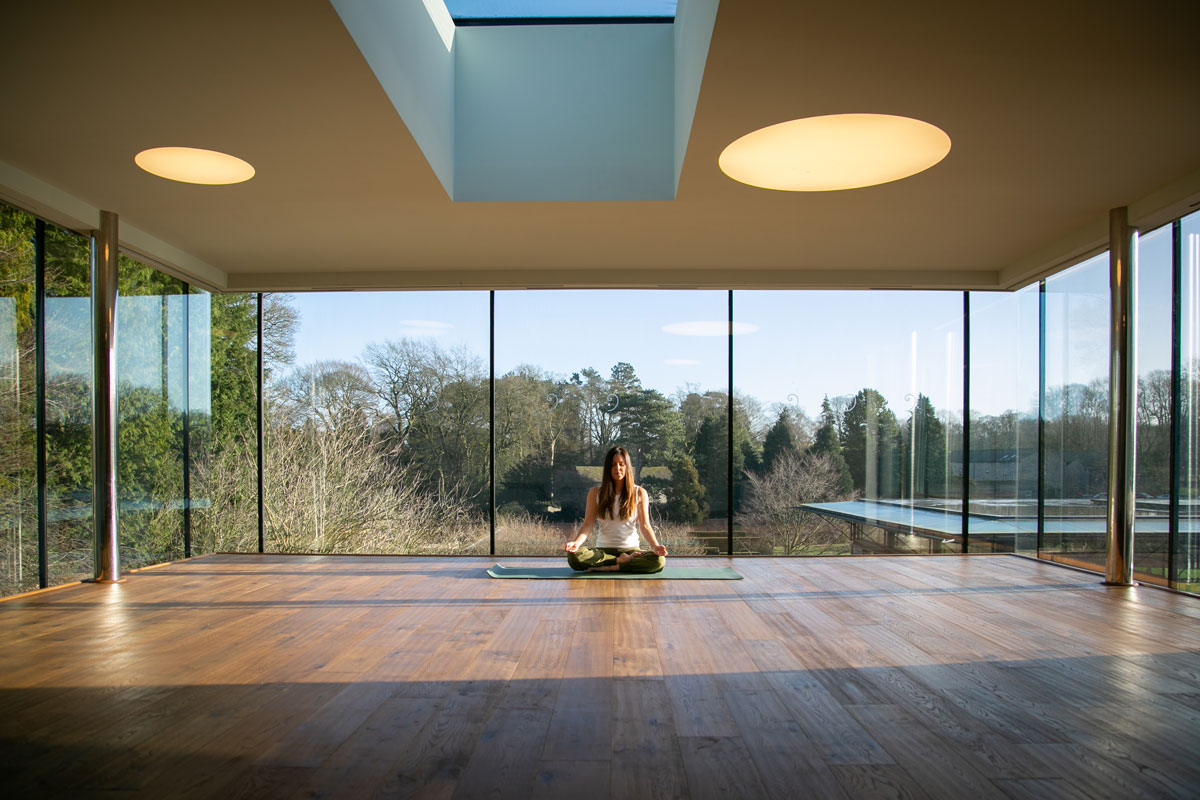
Effective audio solutions to suit the space
Not only was invisibility integral, but a sound that filled the space evenly with quality, calmness and control was of equal importance. Avalon is full of large open and empty spaces which is where the Amina speakers came into their own. Sound evenly fills the space and is delivered with aplomb, supporting and nurturing the beautiful Avalon experience.
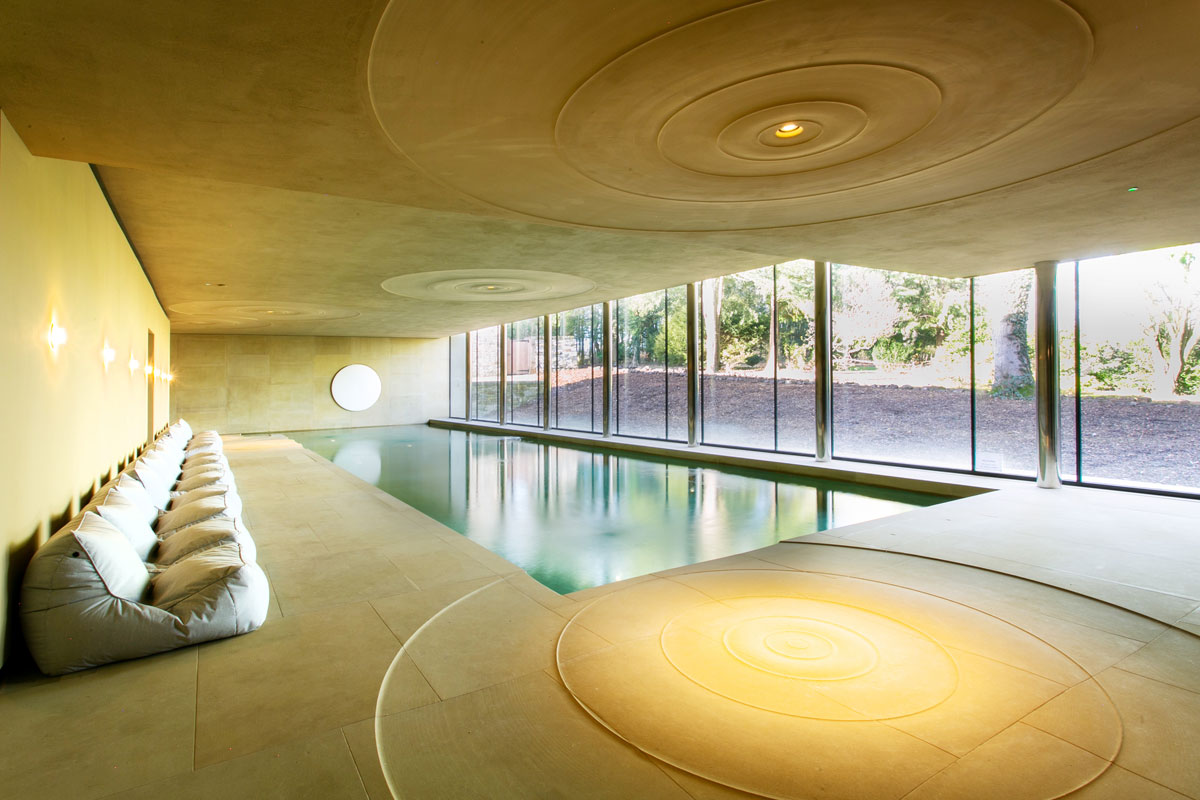
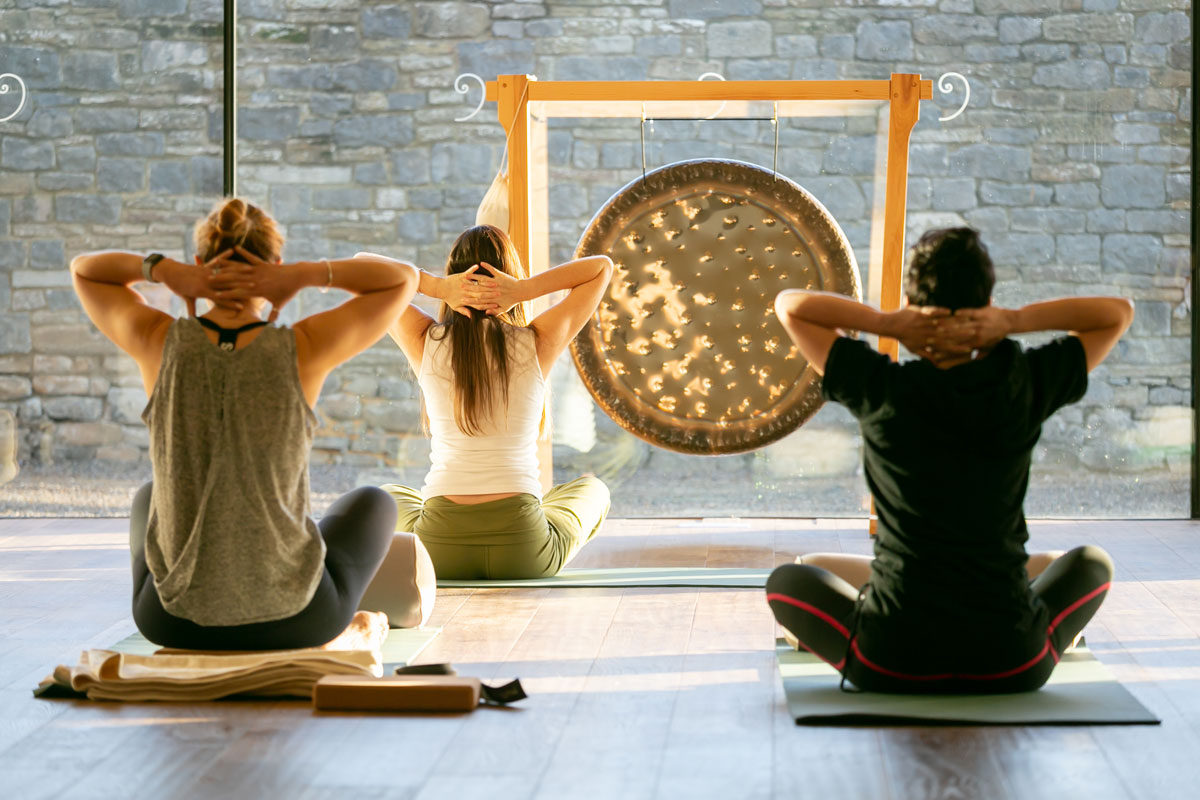
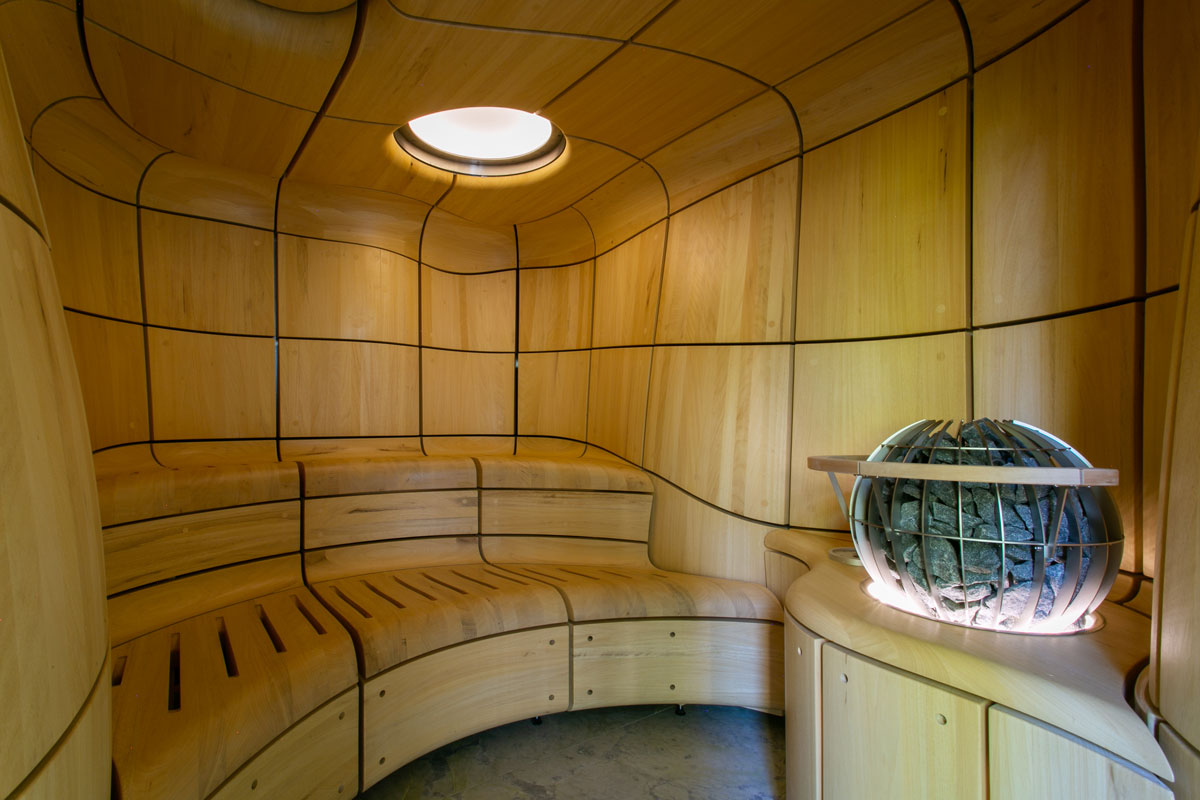
Providing the right amount of bass
When it comes to bass, there is only really only one name that stands out above the rest for quality without compromise; Velodyne. Or, more precisely in this case, the Velodyne 15" Digital Drive plus. Two of these power-house subwoofers are hidden away in descrete, bespoke cabinetry using vents to allow sound and bass pressure into the room. Bringing the Yoga Studio's Dolby Atmos experience to life with thunderously deep, tight and dynamic bass; whatever the audio application.
Needing high quality, deep and clean bass with an IP65 rating for the swimming pool area brought us to the Artison RCC320 range of subwoofers. Known for their phenomenal 'Reactance Cancelling' technology. Allowing them to achieve vibration-free, room-filling bass from a compact in wall unit.
About Redline
Formed in 2001, Redline's expertise lies in creating custom and discrete audio-visual solutions inline with client requirements. The brands they represent display a daring disregard for industry convention, while incorporating ground-breaking technology and a high attention to detail and superior quality.
If you'd like to become SBID Accredited, click here to find out more.
The way we view and use our bathrooms has changed in recent years. It is now seen as a place for replenishing and relaxation as homeowners seek to a create more luxurious, spa-style experiences in the home, with dedicated space to unwind from the day and indulge the senses.
With the average female spending at least 29 minutes in this space every day, it’s becoming vital to ensure that bathroom environments are designed to deliver the right atmosphere of luxury and indulgence; redirecting the focus to our personal care and wellbeing rituals to cultivate more accessible wellness experiences without leaving the house.
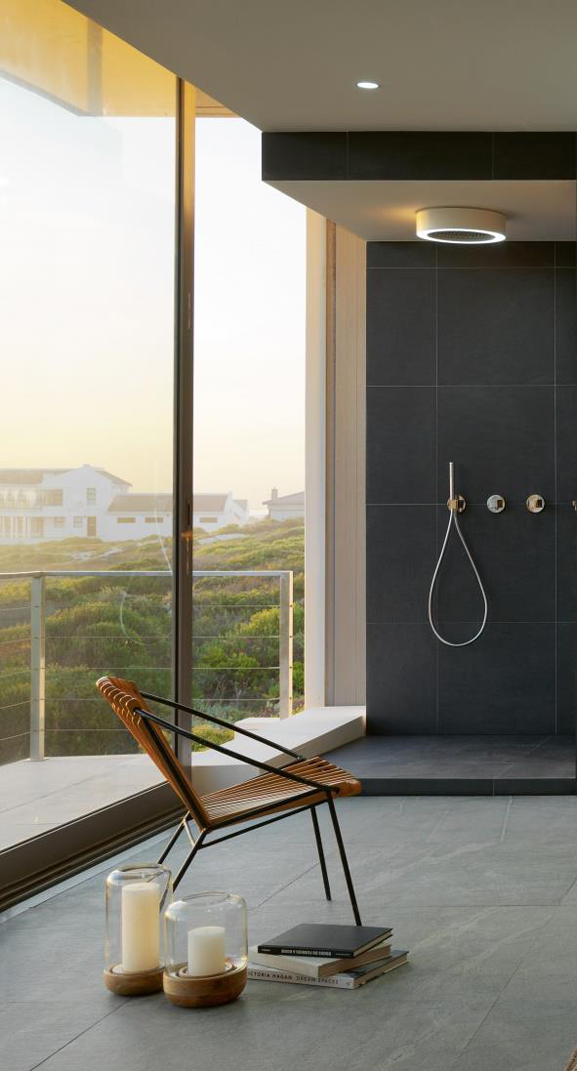
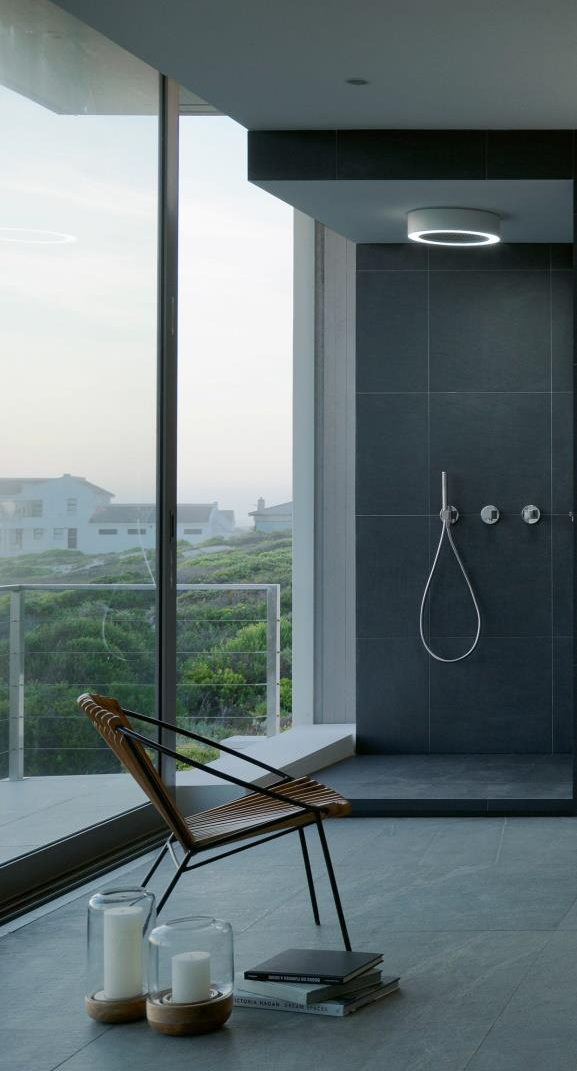
The shower has become a large part of this wellness-driven, self-care lifestyle and in many homes it now replaces the traditional bath tub; with many showering in the morning to actively start the day or taking a shower in the evening to relax the body and soothe the soul. The ROYAL MIDAS shower light made by KEUCO creates a unique showering experience with the perfect combination of water and light.
The unique shower light concept has a large integrated shower head to create a stunning combination of light and water, providing positive effects on the person showering and offering a bespoke experience depending on the time of day. Single drops of water reflect the light, whilst the water streaming from shower above covers the body – whether refreshing, cooling and invigorating, or warming and relaxing, the shower light is a welcome addition to bathroom interiors for enhancing that at-home wellness experience.


The complete all-in-one shower solution means installation is quick, safe and easy in coordination with a KEUCO shower valve; the KEUCO shower light being autonomously operated via a momentary room switch providing on/off and light adjustment.
The shower light can be set or dimmed between 6500 kelvin (day light) and 2700 kelvin (warm white). This is especially good in winter time, allowing users to have a brighter ‘day light’ shower in the morning with a warming effect to activate the circulatory system. A dimmer, softer light during the evening shower creates a more relaxing ambience; mirroring the appearance of sunset to help stimulate the release of melatonin hormones, encouraging healthy sleep.
About KEUCO
KEUCO GmbH & Co. KG is an internationally active, full provider of premium bathroom furnishings. KEUCO offers a wide range of fittings, accessories, mirror cabinets, lights and mirrors, washbasins and bathroom furniture “made in Germany”. Design and function play a decisive role at KEUCO. The aim of perfectly crafted products is to combine aesthetic forms with sensible functionalities - a claim that is consistently taken into account right from the idea through to the implementation. KEUCO has a long tradition of working together with designers.
If you'd like to become SBID Accredited, click here to find out more.
Project of the Week
This week's instalment of the #SBIDinspire interior design series features a residential design by 2020 SBID Awards Winners Roncarati + Zaffera.
Woodside Loft is a residential loft conversion to what was originally a modest 1930s three-bed semi. The property already benefited from a large two-storey side/rear extension. The owners wanted to create a unique loft space, which took advantage of the views to the front of the building and the existing extension’s small pitched roof. This was to be an expansive, multi-use space, with a modern-retro style.
SBID Awards Category: Residential Budget Up To £50k Sponsored by Sans Souci
Practise: Roncarati + Zaffera
Project: Woodside loft
Location: London, United Kingdom
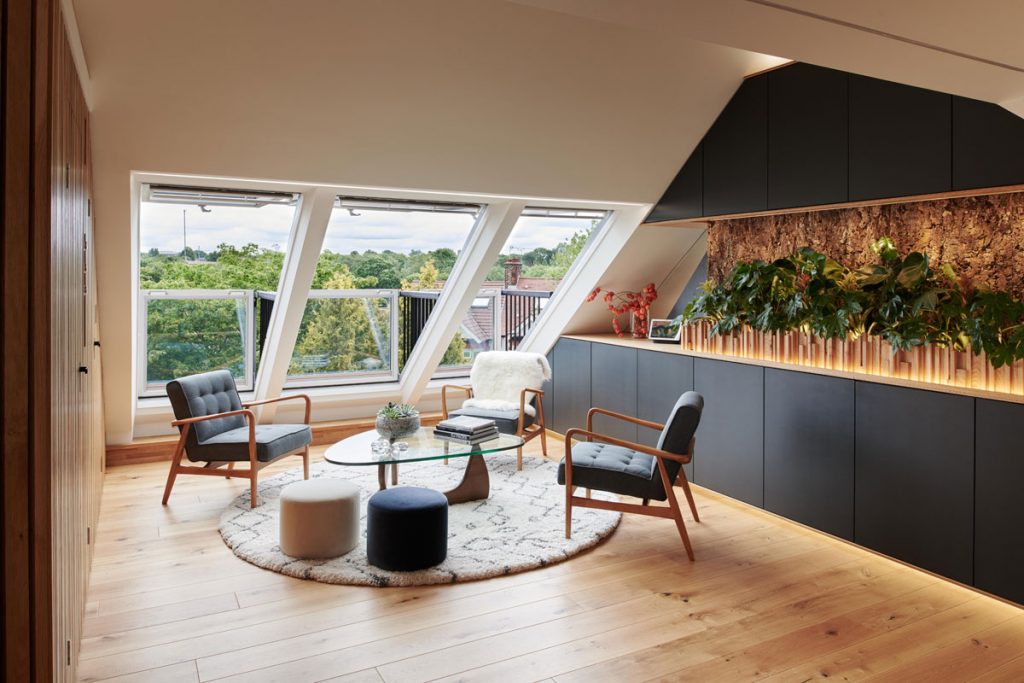
What was the client's brief?
Crucial to the design brief was that the space feels bright, spacious, organic, and comfortable. It should be a haven. It should act as a living room with a view, a guest room, a project space, a place to relax, a place to be alone, or a place to be together. It should be several things all at once.
The space was to be bright, multi-functional and take full advantage of the view. It was important to utilise the awkward/small existing pitched-roof area from the previous side extension and include a shower room – which should be as small as possible, whilst still offering a large shower enclosure and full-sized basin.
Another aspect of the brief was to use natural materials wherever possible. In terms of the design, we featured contemporary styling with a retro/mid-century twist. The project, first and foremost, was all about maximising the liveable space, including the storage space.
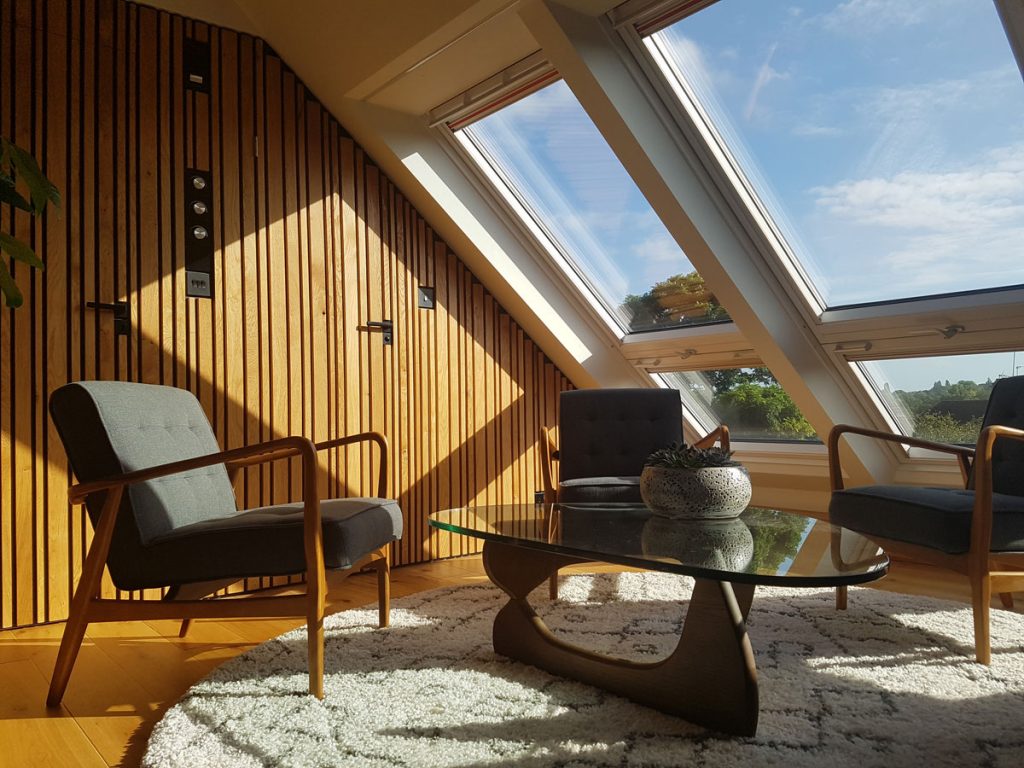
What inspired the design of the project?
Spaceships from 1970’s sci-fi shows; meet modern, mid-century retro. More than anything, the project’s overarching design was the result of a steadfast determination to meet the myriad practical demands of the client’s brief – which dictated an optimum (and unique) solution.
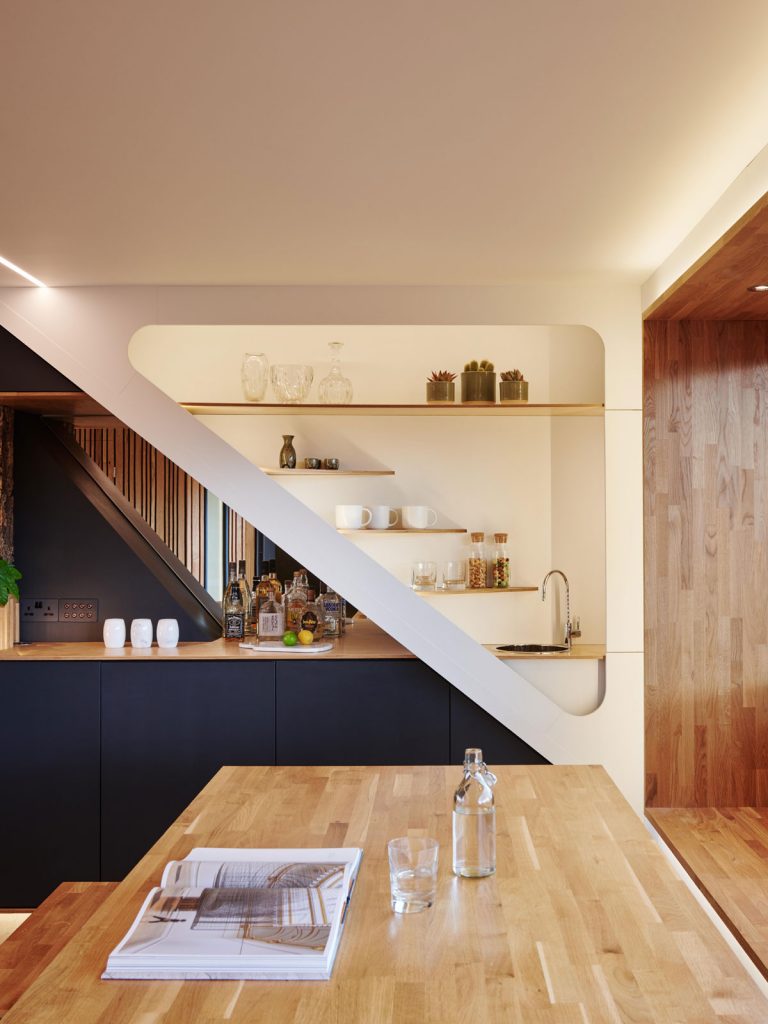
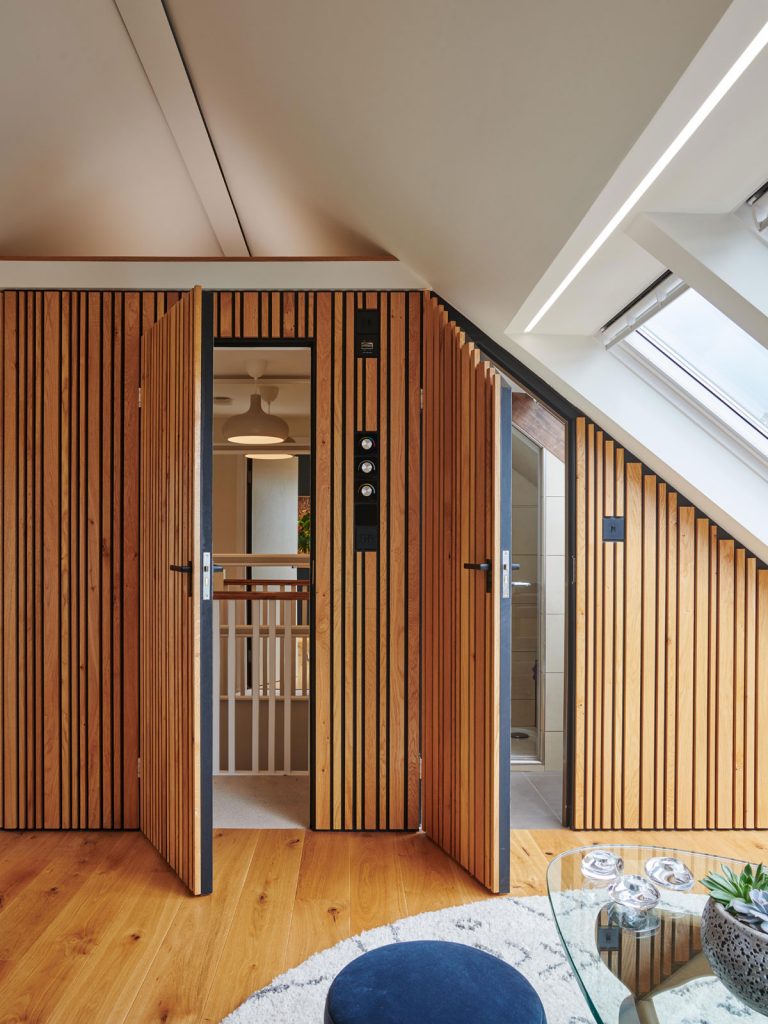
What was the toughest hurdle your team overcame during the project?
The toughest challenge was to find a layout that allowed full-height access to the “cave” area (at the rear) whilst also allowing room for the staircase and w.c./shower room – but to do so without taking a much bigger chunk out of the main living space. This was very much a challenge in three dimensions and with very tight tolerances.
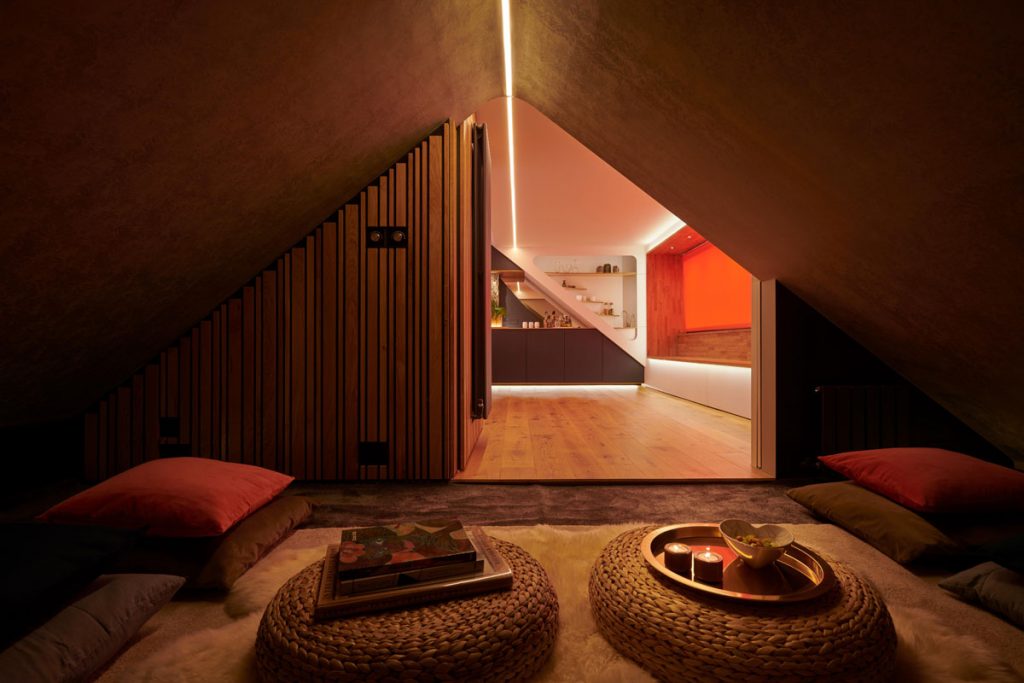
What was your team’s highlight of the project?
Although it might seem insignificant, the biggest highlight was the creation of the wooden planter surround. This was made using offcuts from the oak battens used on the opposite wall. This came right at the end of the project after all the difficult problems had been solved. Crucially though, this was approached as a piece of art. Its creation – especially coming at the time that it did – gave nothing but pleasure.
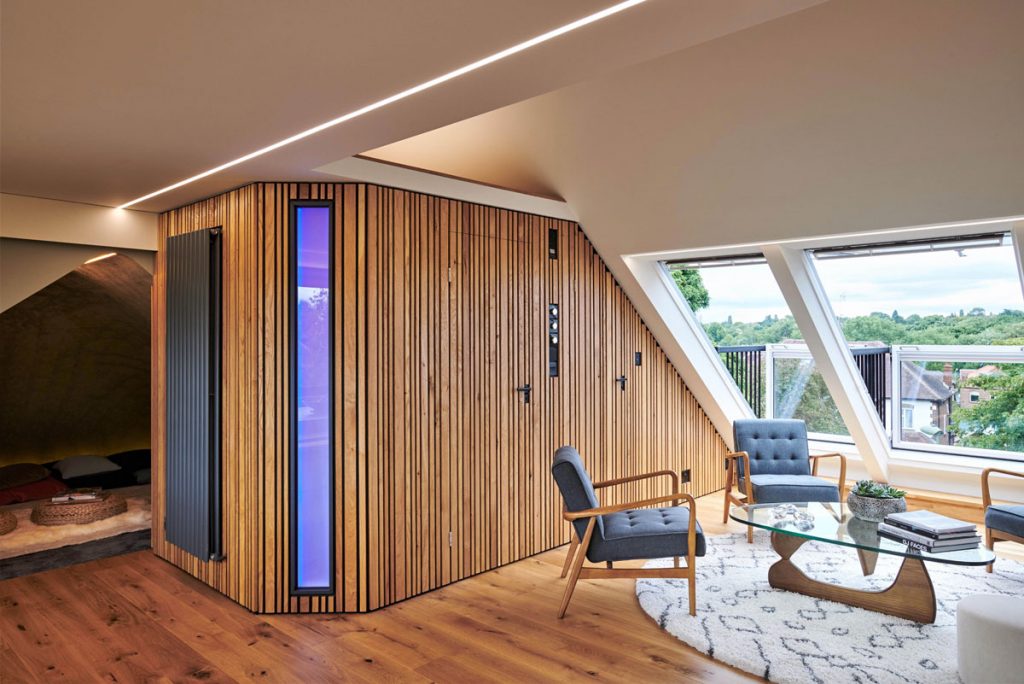
Why did you enter the SBID Awards?
Because of a late-career change, I am an unknown in the design world. I entered Woodside Loft into the awards because I thought it might get shortlisted – which would have been something nice to talk about. (I’d not considered actually winning. Big bonus!)
